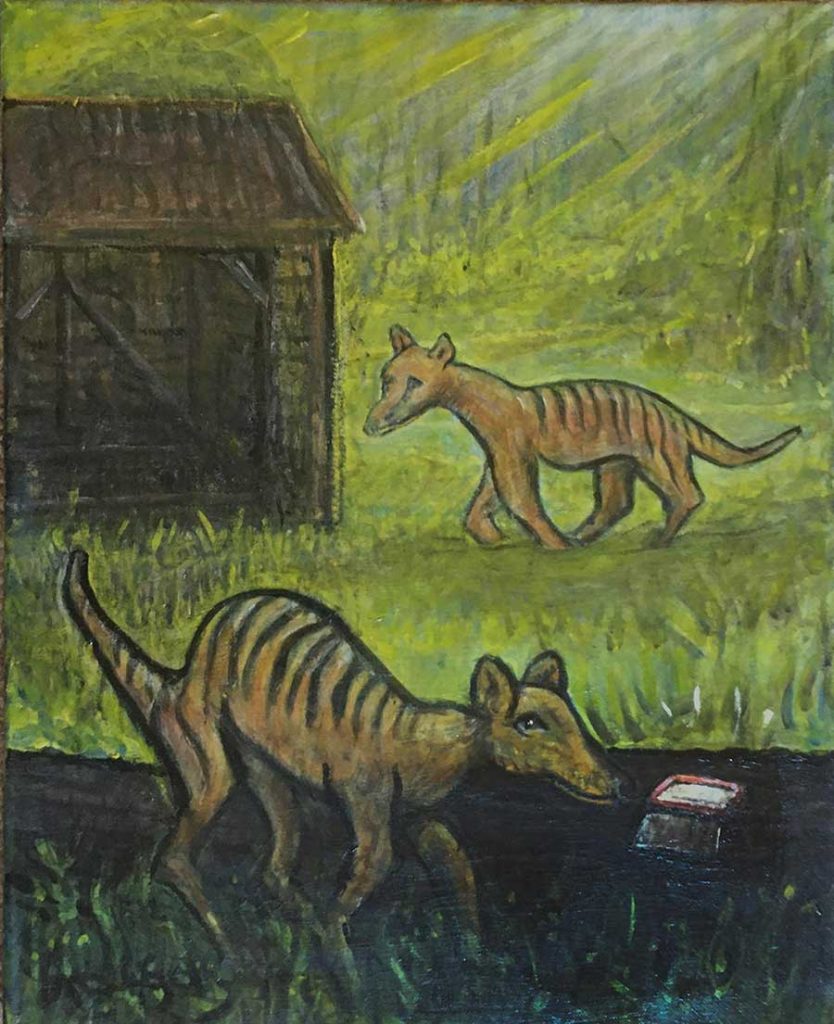
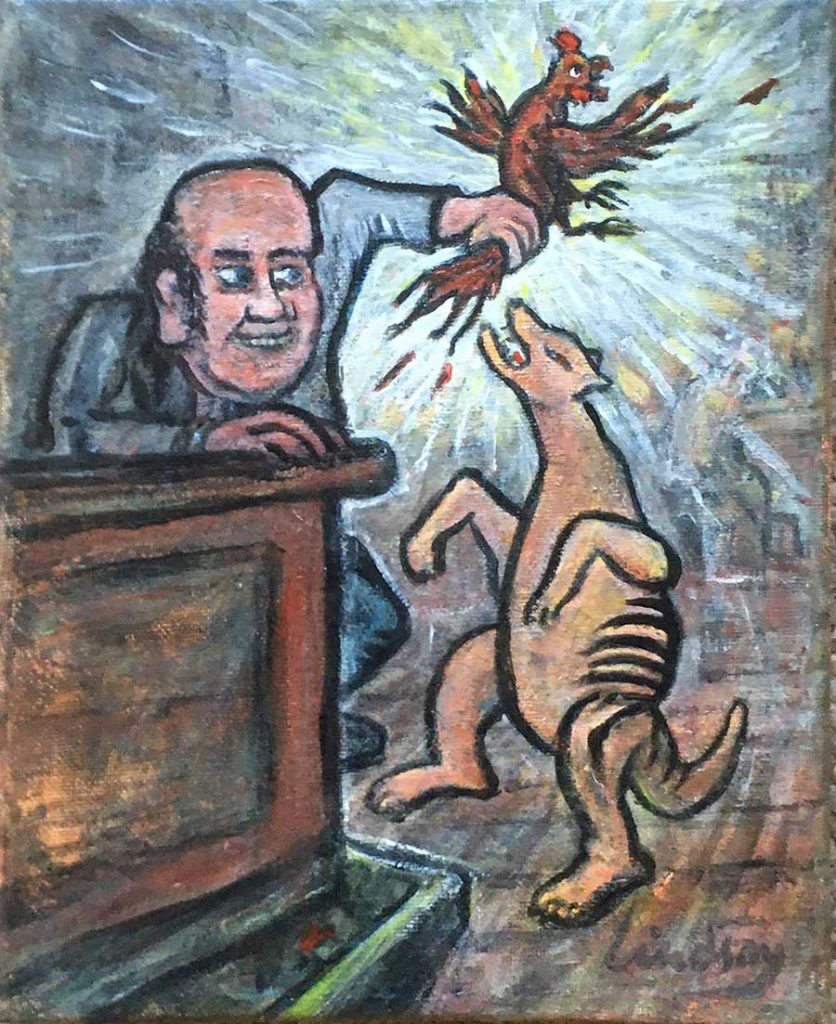
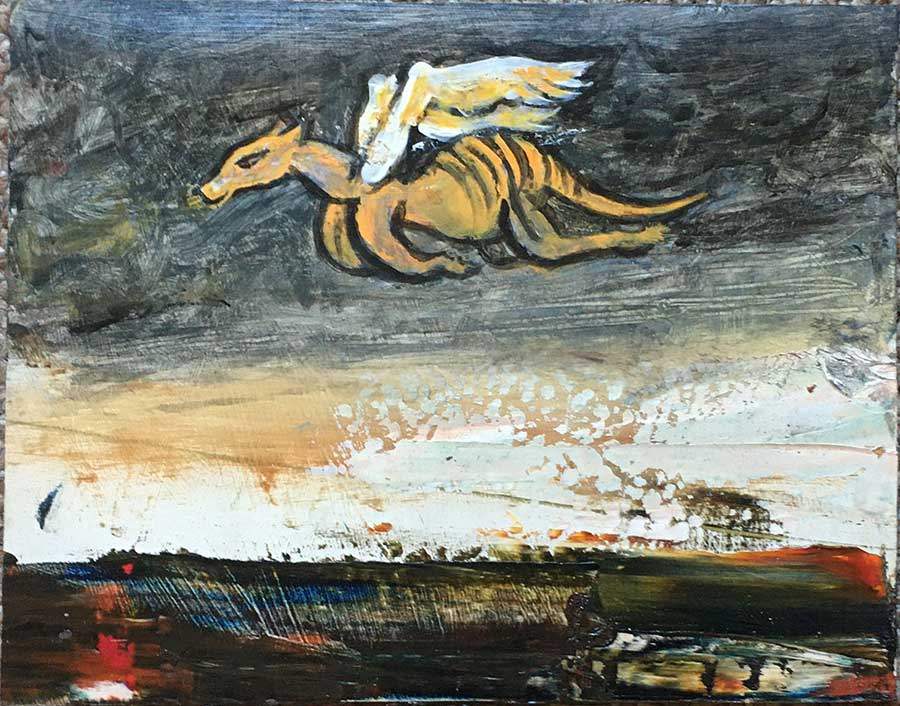
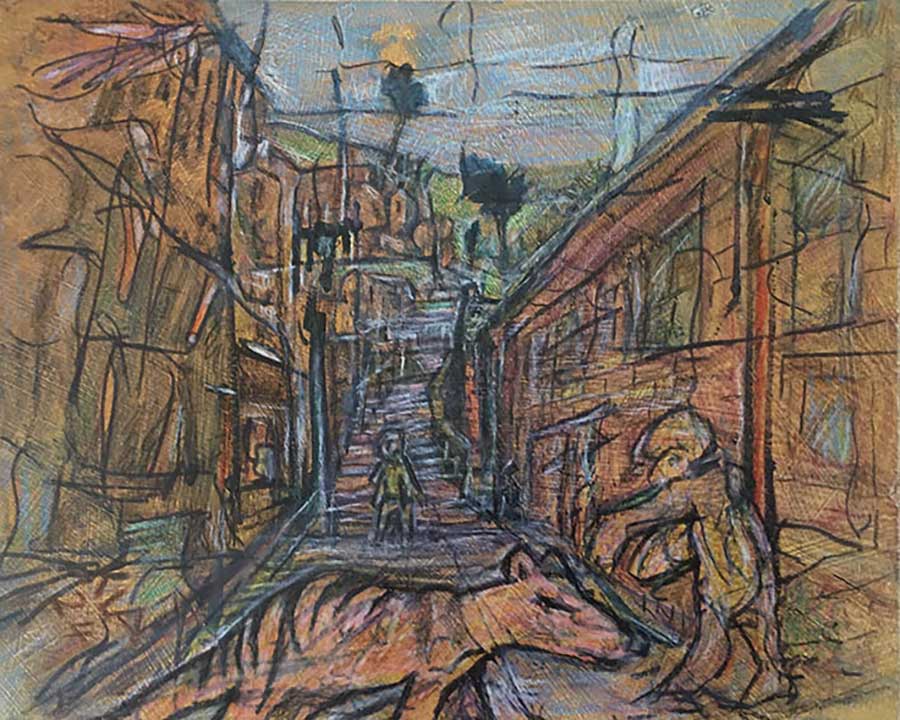
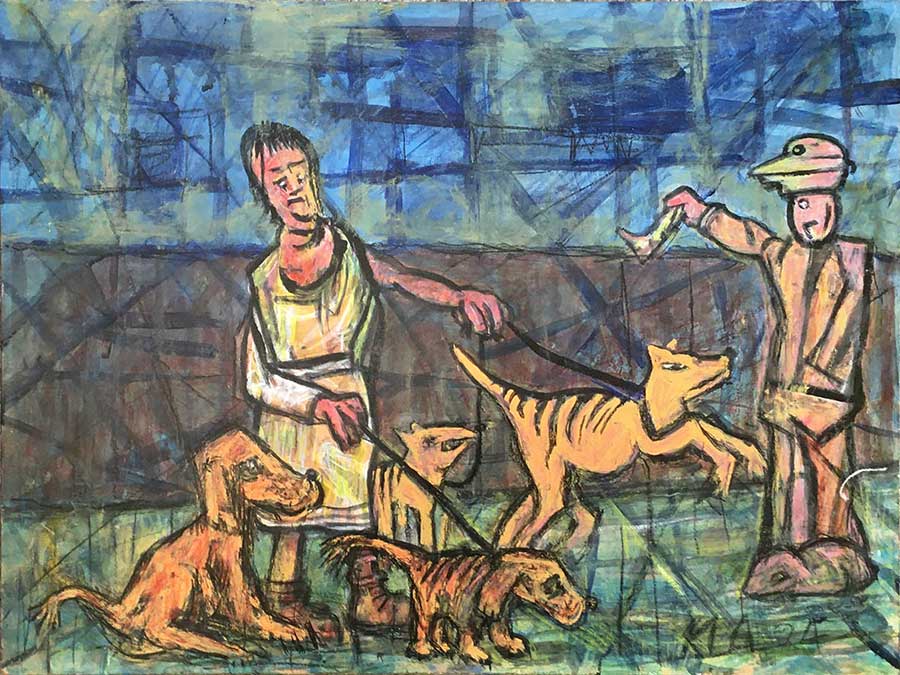
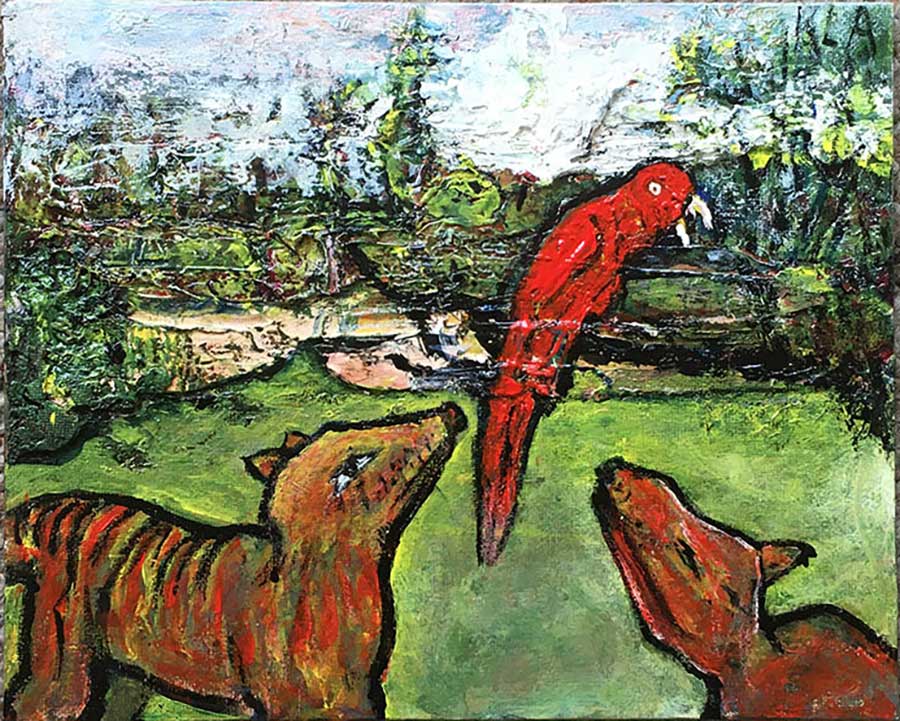






Here at bazznold it is hoped that some of my lifetime’s detritus may be securely saved for future generations in the Cyber Wonderland we have all come to love and respect for its permanence and guarantee of Immortality offered by the worldwide web we are all caught and stuck in, awaiting the arrival of the GodSpider we are here to nurture and preserve until such time as there is no longer any Where or Whysomeness in which our droppings can Live Forever. It is to be hoped that all Civilians who visit this Cyber Condominium will be enlightened and sustained for their “Journey” going forward in cliché-ridden certainty ever deeper into the Mystery as it folds, unfolds, and shifts inexorably onwards to ultimate shapelessness.
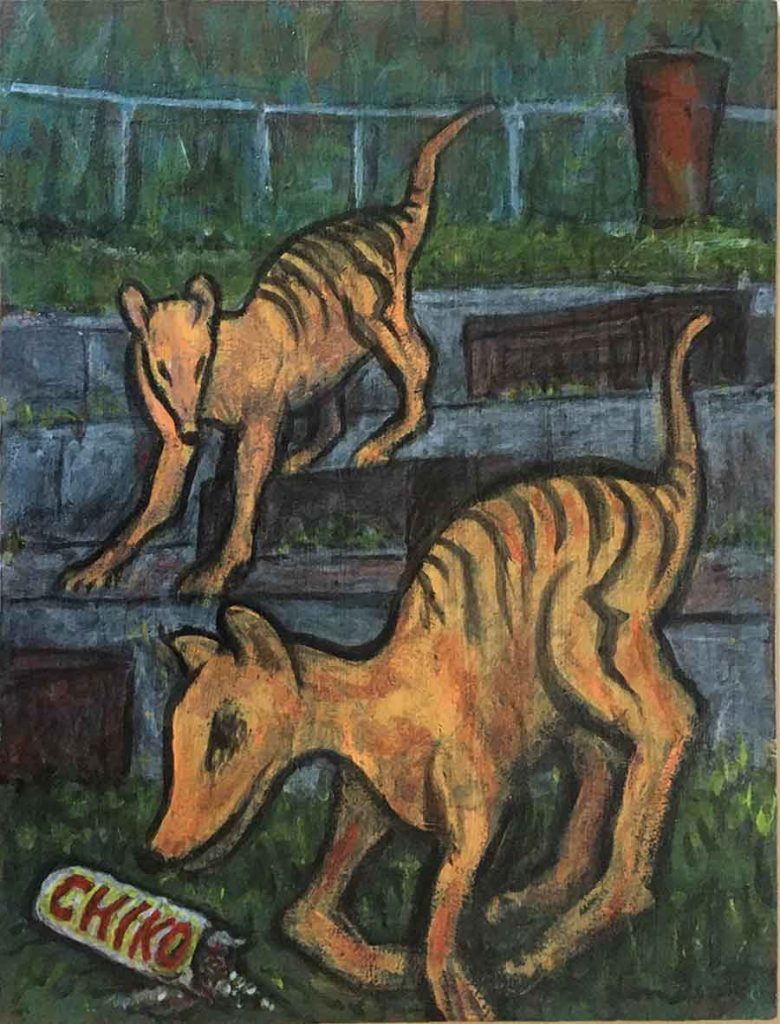
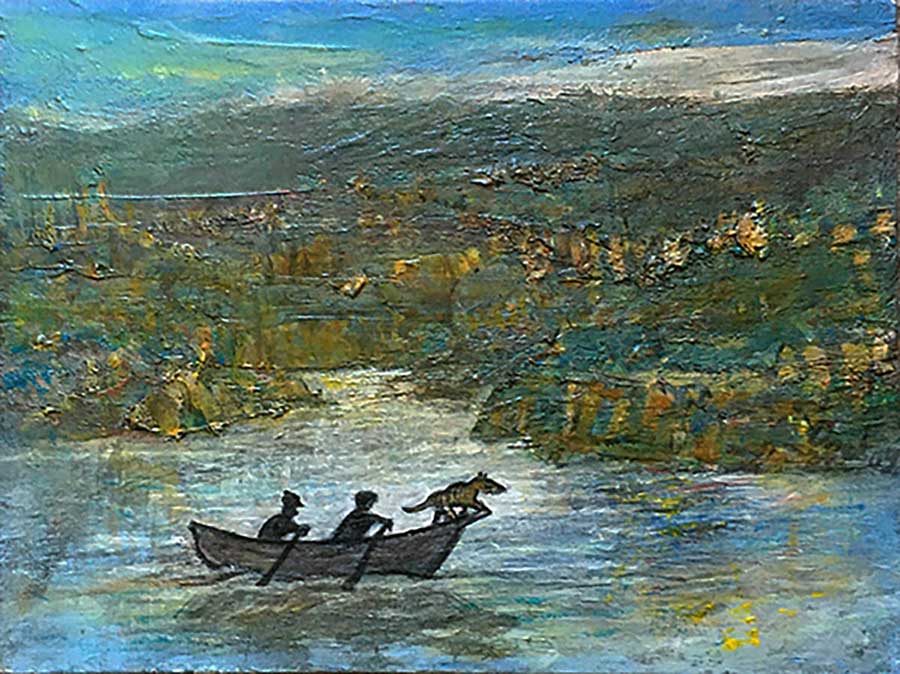
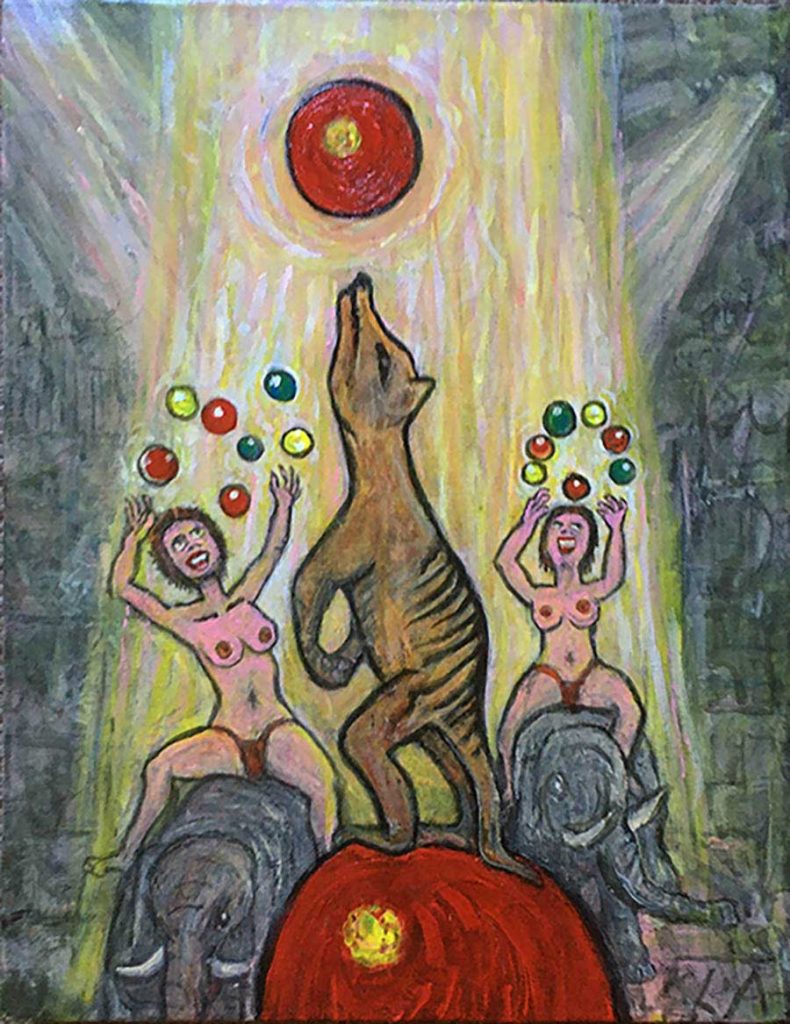
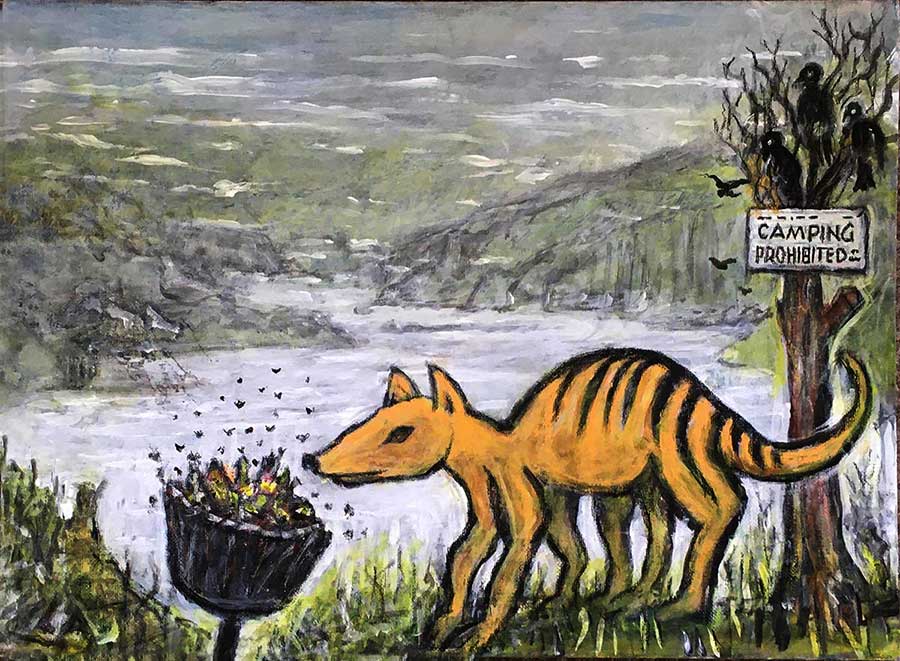
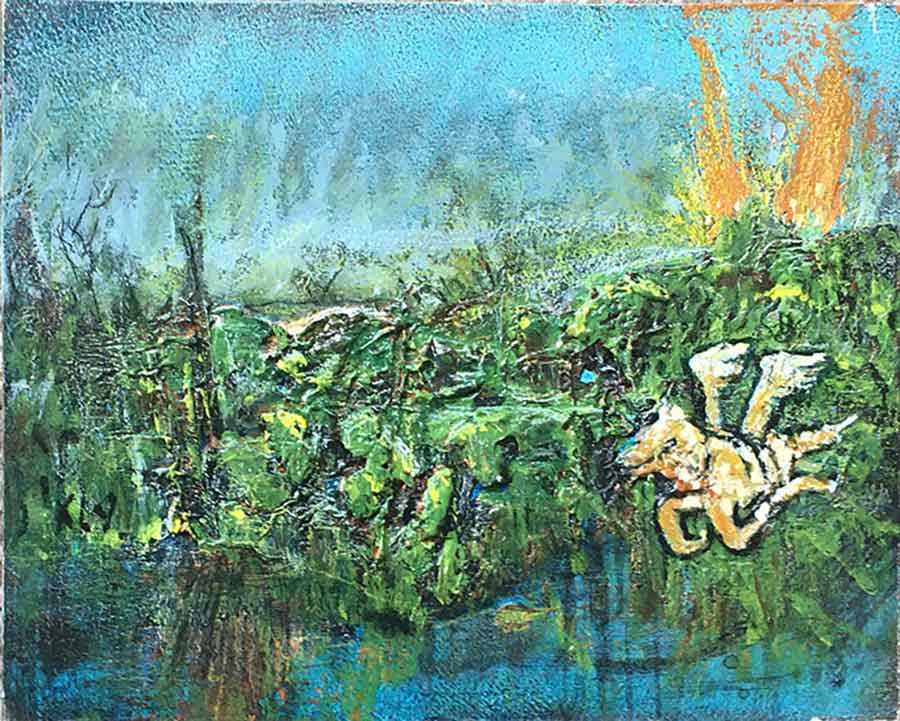
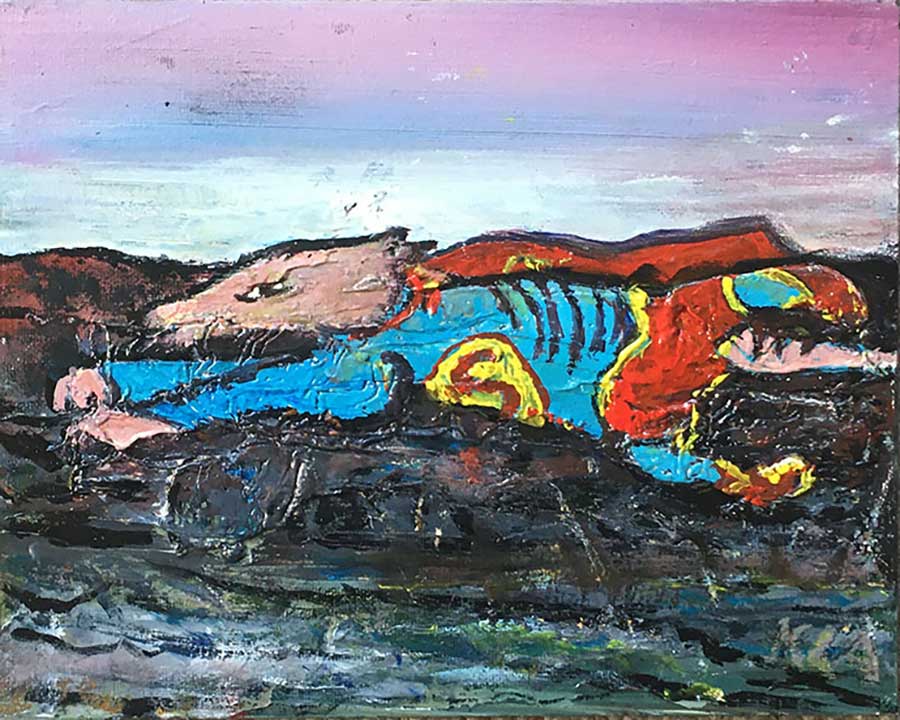
A live performance (audio above) – (fortunately?) captured on tape:
This recording from Joe Lane’s cassette recorder at a pub in South Melbourne in 1992 has a notorious reputation among musicians who’ve heard it.
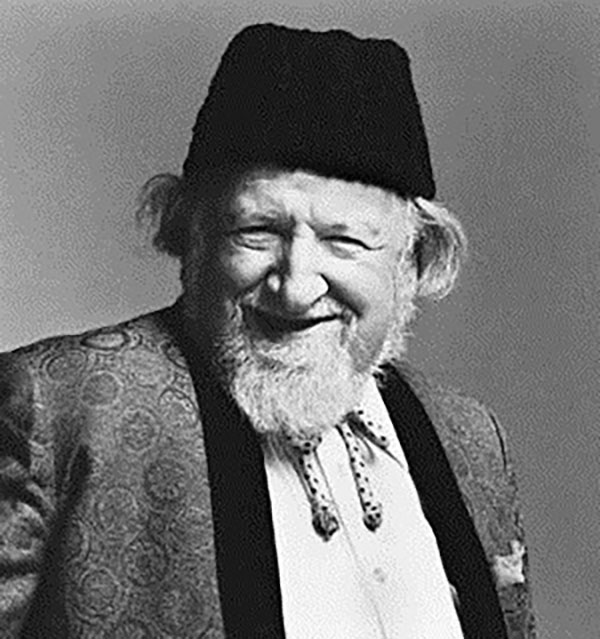
I was sitting in on Mike Jordan’s drums with Joe ‘Bop’ Lane (vocal) and Serge Ermoll (piano) on tour from Sydney, Mark Simmonds (tenor sax), all now ‘late’, and Jeff Kluke (bass).
After the first tune, Serge, a Russian maniac and freejazz pioneer, full of mind-altering substances including vodka, decided to give the audience a jazz history lesson — after requesting, or allowing one of my spontaneous end-of-song solos, which Joe had abated. — and then it became edgy ‘street theatre’ when a woman in the audience dared to heckle him, so we retaliated with Miles Davis’ “So What.”
A piece of Oz Jazz History, which, as Joe explained at the end, I was a part of. It could even be seen or heard as a precursor to later trends of musical mayhem.
This included YouTube video of a Joe Lane performance in Sydney may help you to visualize him onstage, with Al Turnbull on drums.
Cappy Crepuscule and his Rhythm Boys reprise a classic old Australian song in their unique fashion, with illustrations by Emile Mercier, Linzee Arnold and H B ‘Mick’ Armstrong.
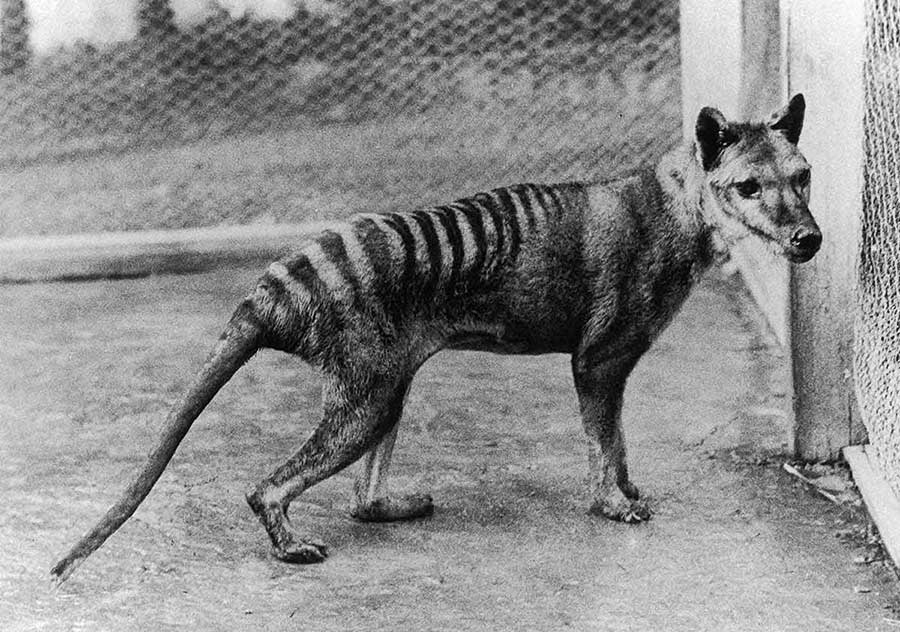
The Thylacine, or Tasmanian Tiger, despite its appearance, was not related to canines. It was a marsupial, and carried its young in a pouch, but facing backwards. Science now tells us its closest relative in Tasmania was the Tasmanian Devil, and two species of quolls, all much smaller animals, unalike in appearance..
It also existed on mainland Australia. It is unknown how many thousands of years it roamed Tasmania, with its only predators being the respectful Aborigines, who hunted and ate from need, not greed. There is no evidence they were sought as food, in any event, being carnivorous, with apparent finicky preferences for certain organs of their prey..
There have been no confirmed sightings since 1936, when “Benjamin” (possibly shown above) died in a Hobart zoo.
The invading colonists placed several bounties upon them through the 1800s, believing, or claiming they were a threat to sheep, a conjecture which recent scientific study has opposed. Hence they lasted only about 130 years after the invasion of “civilization”. Similarly, Tasmania was also home to a native Emu, smaller than its mainland cousin. By only fifty years of colonial occupation, they were scarce in the wild; the last one died in captivity in the 1870s. Most Tasmanians today are unaware they ever existed. All we can surmise is that they must have been edible.
Along with the shameful and evil Human depredations our ancestors committed on this island, utter and profound sins against Nature, including the wholesale murder of trees and habitats that were alive and thriving centuries before they inflicted their ignorance and arrogance, the passing of the emu and thylacine is enough to engender in me a raging fury and hatred towards the acts of my ancestors. This, on top of the outright lies kids of my generation were routinely told at aschool, that the original inhabitants were entirely extinct, and those on the mainland were not far behind.
Is it wrong to despise one’s ancestors? Surely a civilized race respects its elders? I see nothing to be proud of in our history.
This anger is what has engendered my series of paintings, “Thylacines Out of Season”. I cannot bring them back, nor their previous custodians, but I can at least attempt to dream them back again. “What If?” they were still around. There are old stories of their domestication, and many claims of sightings.
The search may be futile, talk and hopes of cloning also, but the Shame hovers guiltily over this land, and may the age-old Game of Soldiers and Convicts become extinct here and everywhere.
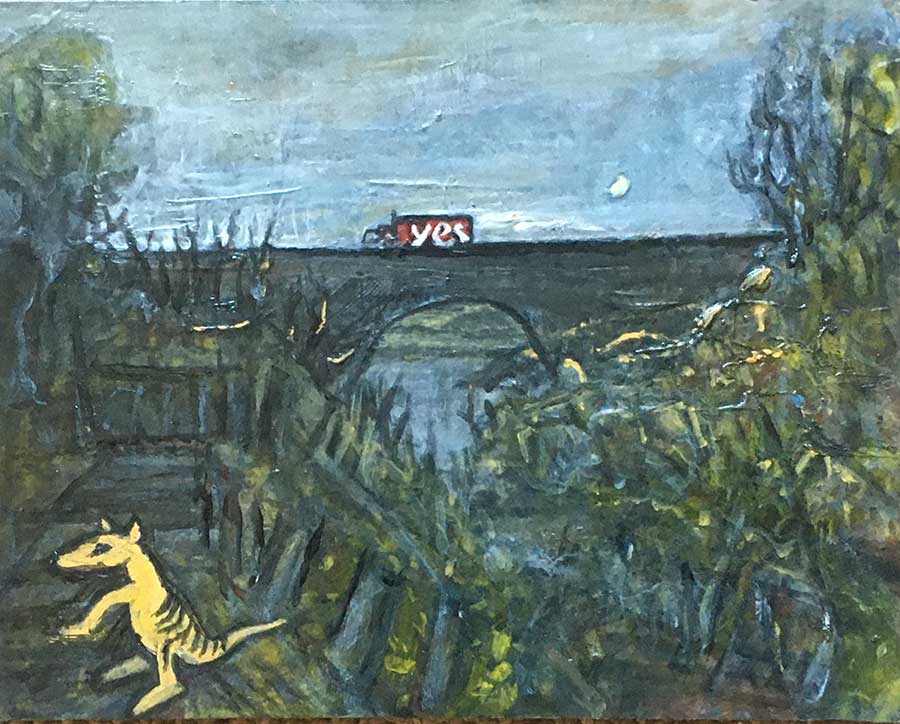

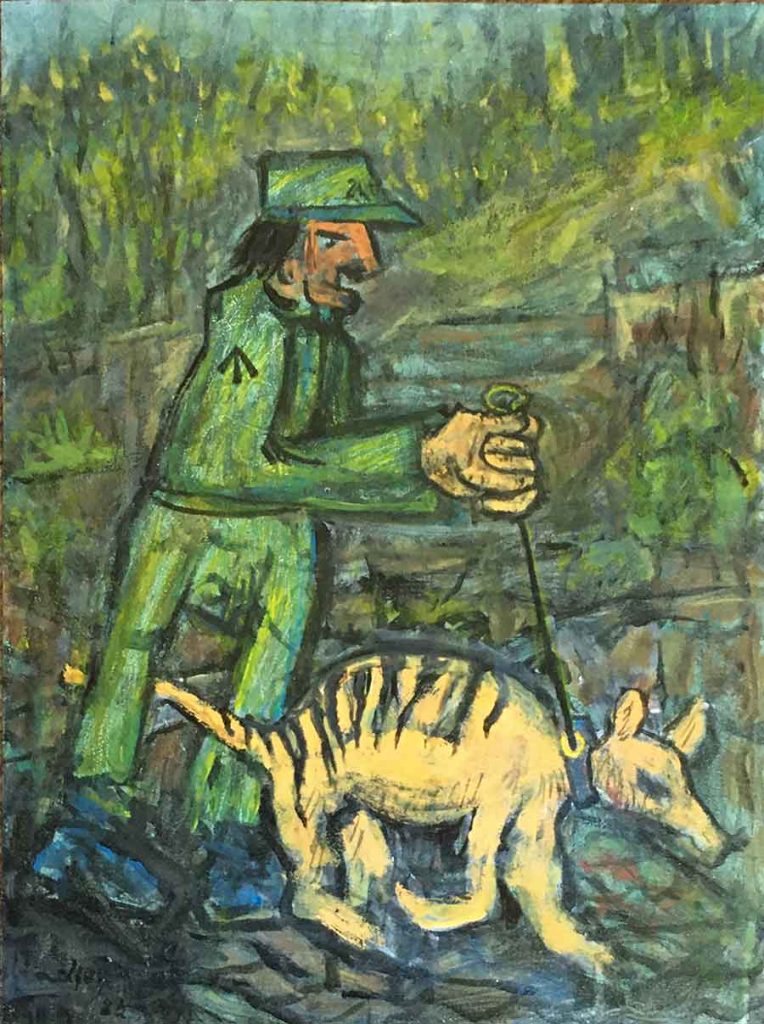
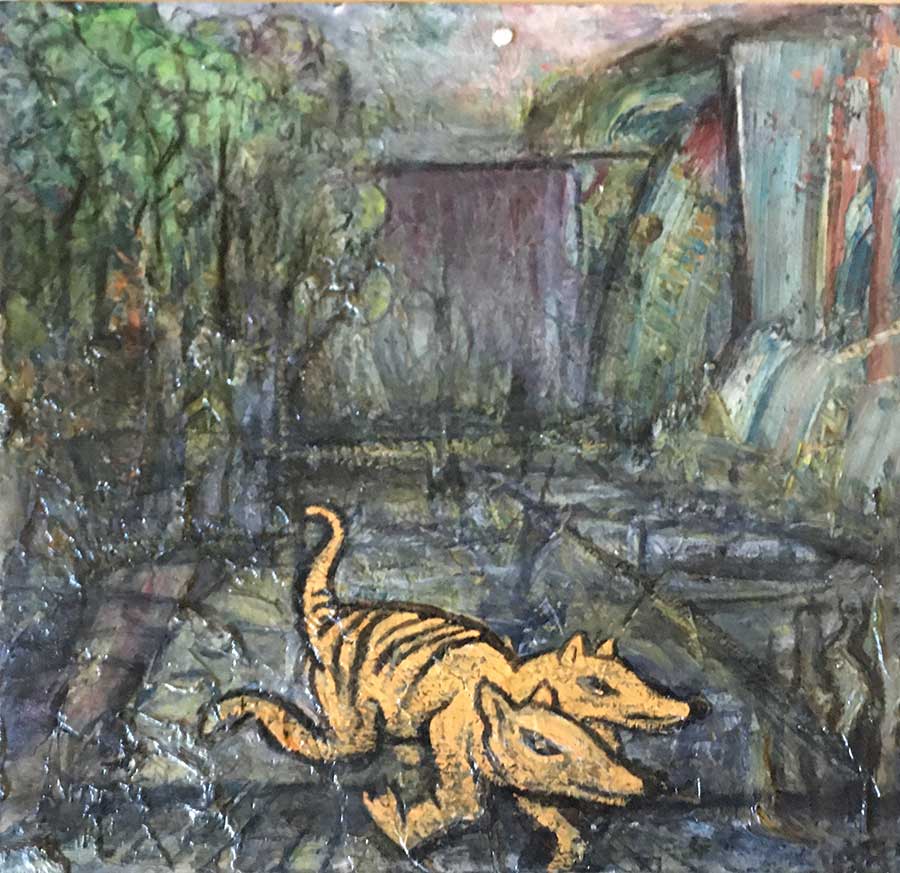

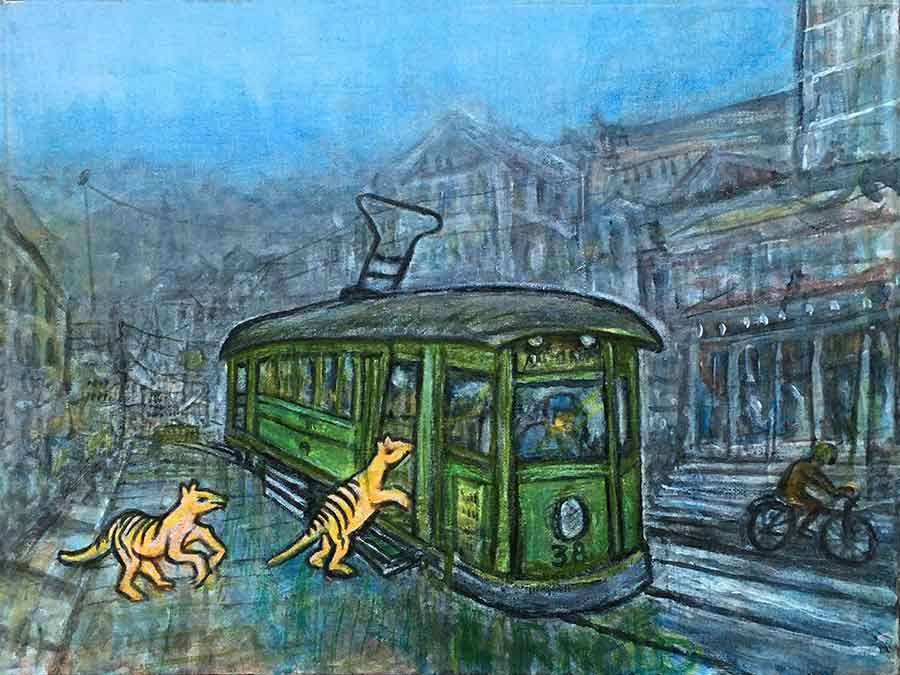



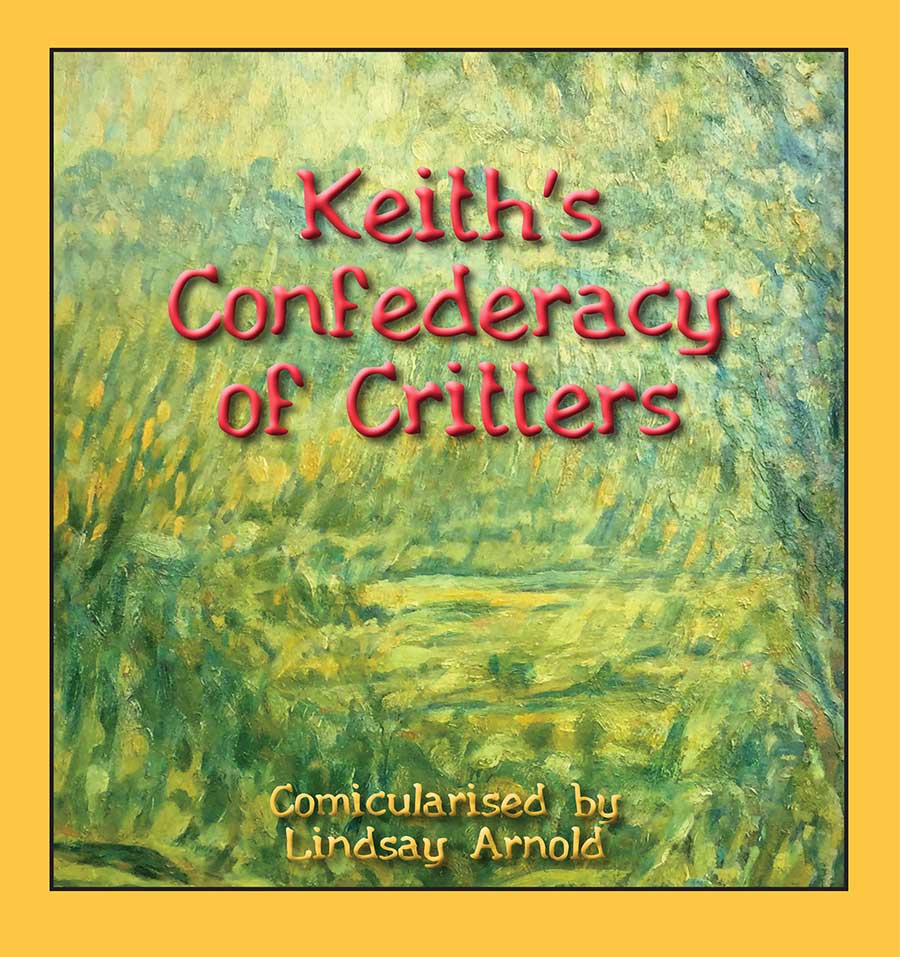
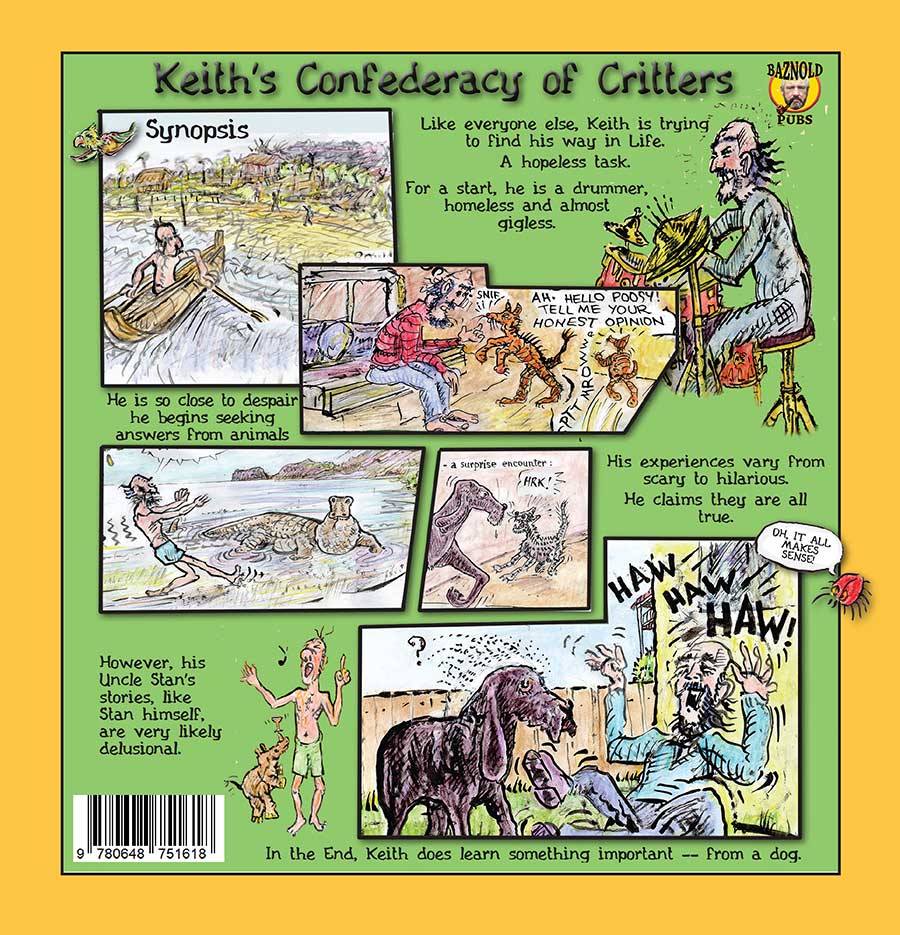


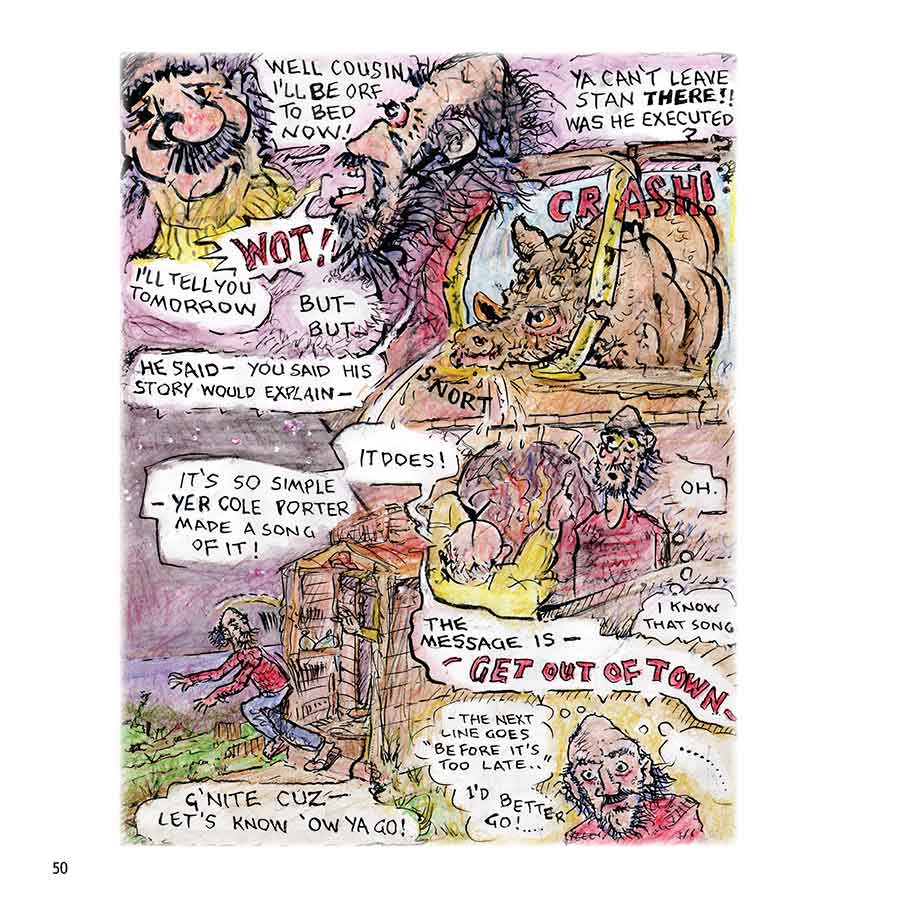
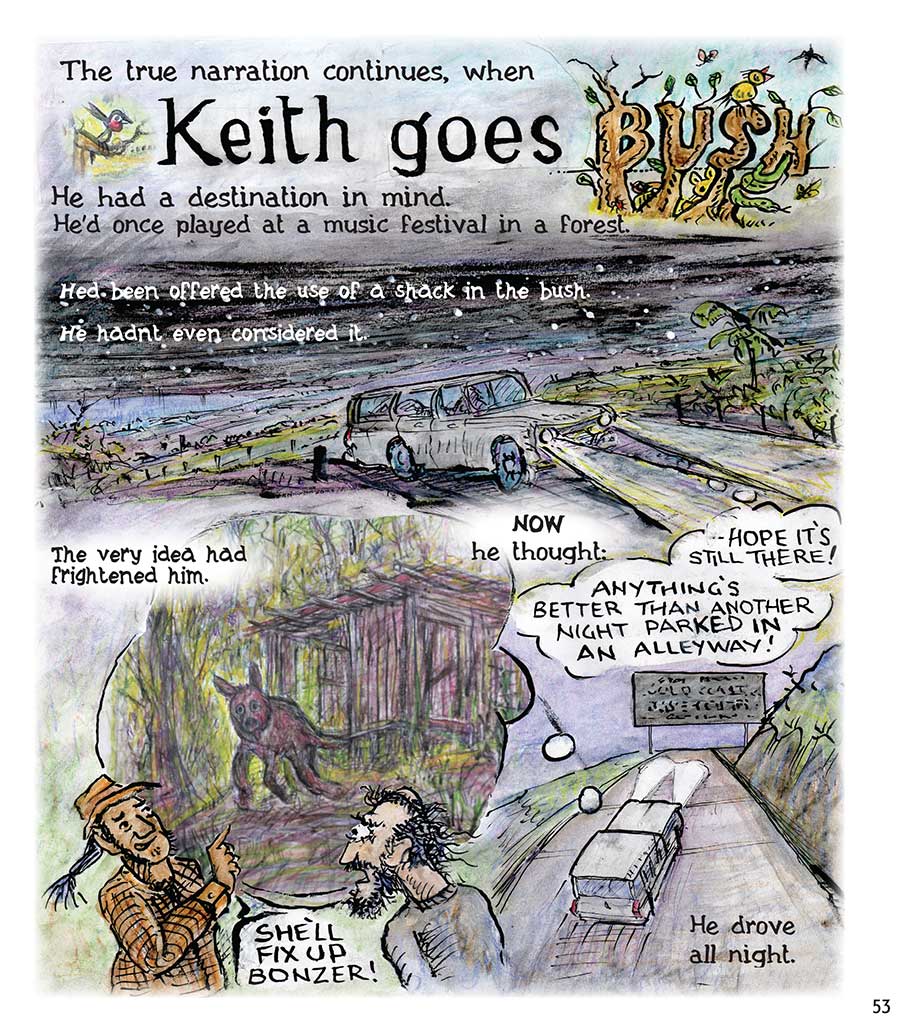
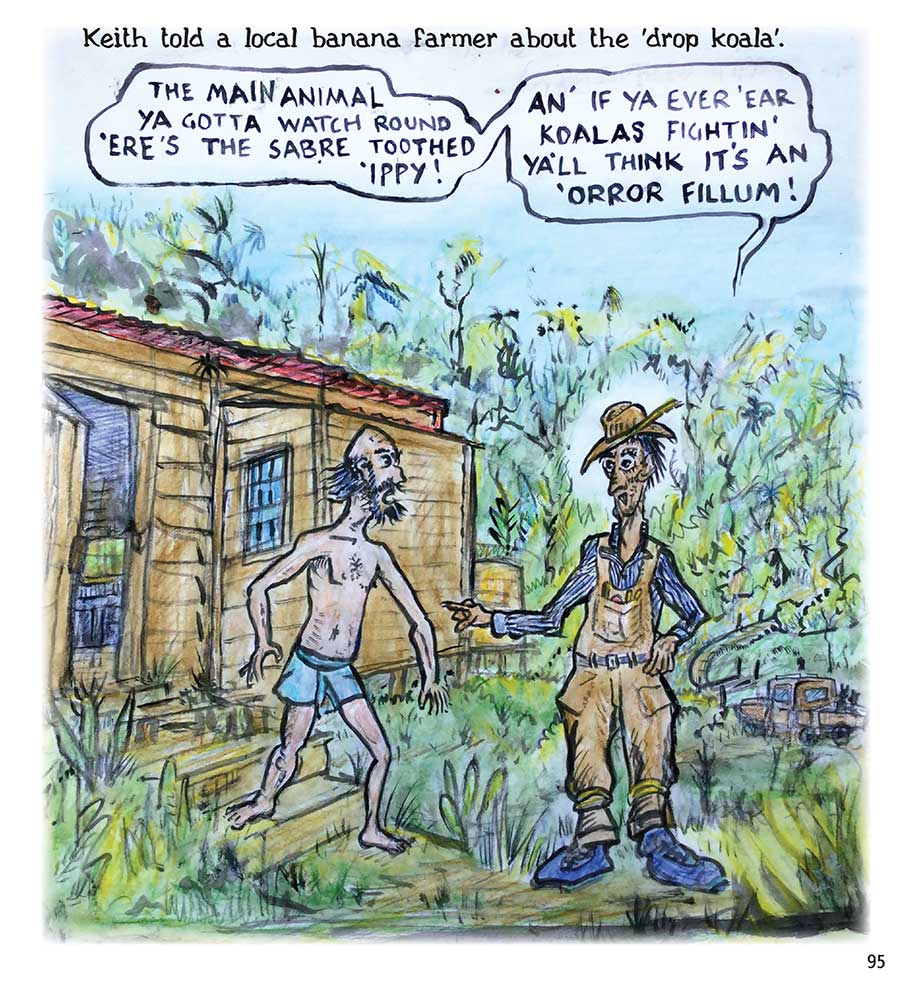


SUMMARY
Keith’s story takes two hundred and fifty pages. It starts with a symbolic childhood memory, involving the gift of a small drum from a mysterious uncle Stan, who he never sees again, but he is abruptly reminded of him in middle age when at the zoo a Komodo Dragon stares at him. He thinks he is getting cosmic messages. He needs help. His life is a mess. He is on the skids. Then a rhinoceros charges him, damaging the bars. He goes to water. What does it mean? He is puzzled and distracted, unsure where to turn.
After a few pages he visits a ‘cousin’, Cuthbert, who knew his uncle Stan, and in fact claims to be Stan’s grandson. Keith is sure he’s being contacted by Stan on the astral plane, messages about animals that he just can’t quite grip. Cuthbert distracts him with stories of Stan and his legendary work in circuses. This Stan Field could hypnotise rhinoceroses, and even once made one disappear. He was Showbiz Royalty in his time, so his cousin Cuthbert tells Keith. This first tedious intrusion of the doubtlessly figmentatious Uncle Stan is about 30 pages long, and features Errol Flynn.
It is on just such another astral impulse, with no reason to continue his miserable existence, homeless and unemployed, destitute in the big city, and with nothing to stop him, that Keith quixotically quits the concrete jungle and heads for the tropical north. This real jungle idyll turns out to be a continual struggle to survive in basic conditions, marked by constant encounters with species of wild Nature nothing like those depicted in tourist brochures. Despite this, he stays living there for want of choice. His basic needs are met; it is a languid life. It takes many months and about 60 pages for him to leave. It is possible that he comes to realise that no creatures are specifically hunting him for food or sport. He just happens to be there while they carry on their normal lives, something that he does not have. They still scare him. He abandons his quest for answers from animals, and drives back to town.
He goes almost straight back to the zoo. The same Komodo Dragon singles him out from the crowd to stare hungrily at him. He rushes again to tell Cuthbert about it, and thence ensues another intrusion of Stan’s showbiz stories, albeit only a short one, which however explains a lot to Keith about dragons, just as he’d learnt about rhinoceroses from Stan’s experience. Be that as it may, it does bring the book to the end of its first part, about the halfway mark.
The whole second half of the story is about a dog. Readers should not succumb to trepidation or expectations of boredom at this blunt statement. Neither is this dog a plain ordinary pooch, nor is its story immune from penetration by Uncle Stan, who fetches up at the heel of the hunt as the motivatory spark and resolution of the entire tale from beginning to end. Everything falls into place. The “drum” is, In fact, according to information mystically conveyed to Keith, that Stan has been pretending to be Cuthbert all along, and is actually Keith’s father! Figure that out.
Keith’s luck serendipitously turns in the city. He is housed comfortably, and employed in his chosen craft. It happens almost so smoothly It does not seem natural. The unsought reality of an intimate relationship — with Charlie, the huge dog that is foisted upon him — lifts him from his delusional condition, so that he is able to repudiate the continued Cosmic interference of his mythical uncle, and he can perhaps settle down contentedly, almost like a real person in a real world, a civilian. References to the Church of the SubGenius, chapter and verse, indicate exactly where this plot has come from and where it is going. Life is, after all, an Enigma. Ask the animals.

Emile Mercier was possibly Australia’s best-loved cartoon humourist.
He created many satirical characters and parodies of comic heroes of the period, all presented in his unique Australian colloquial style.
His serialised stories ran through such a diversity of comic book titles from wartime through the 1940s that it seems unlikely that many readers could have followed every episode.
The collections in these books are a partial attempt to redress this, and perhaps help to rescue some of Mercier’s work from the unjustified oblivion which ensnares so much of our “popular culture”.
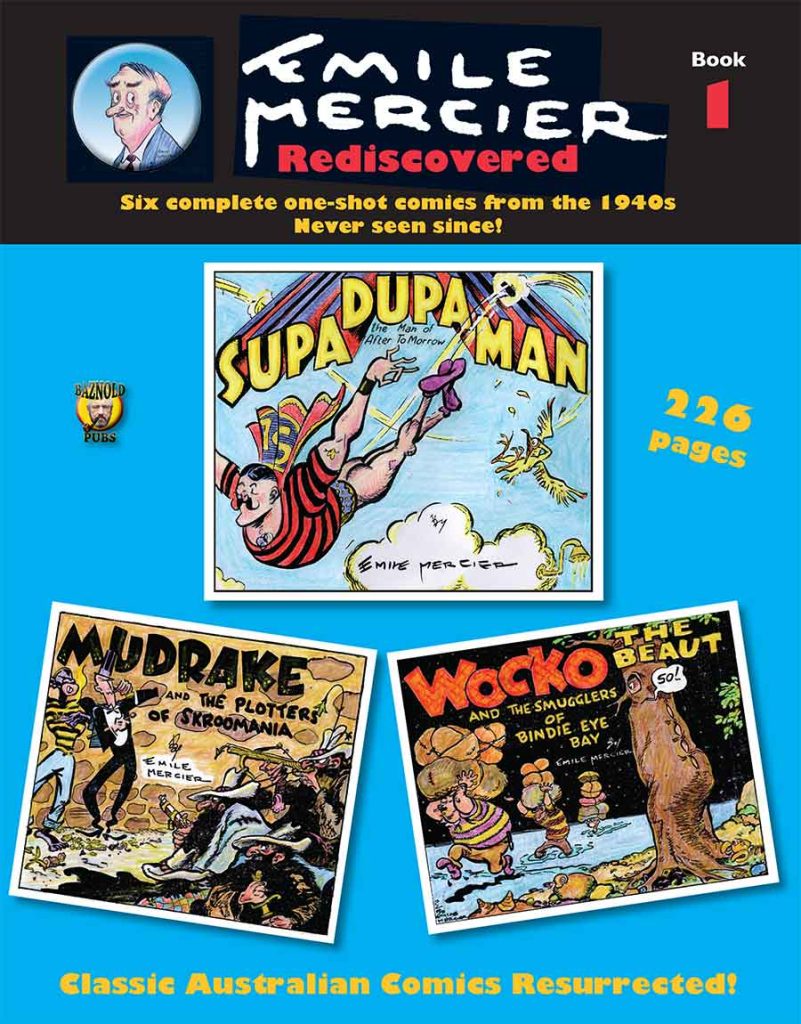
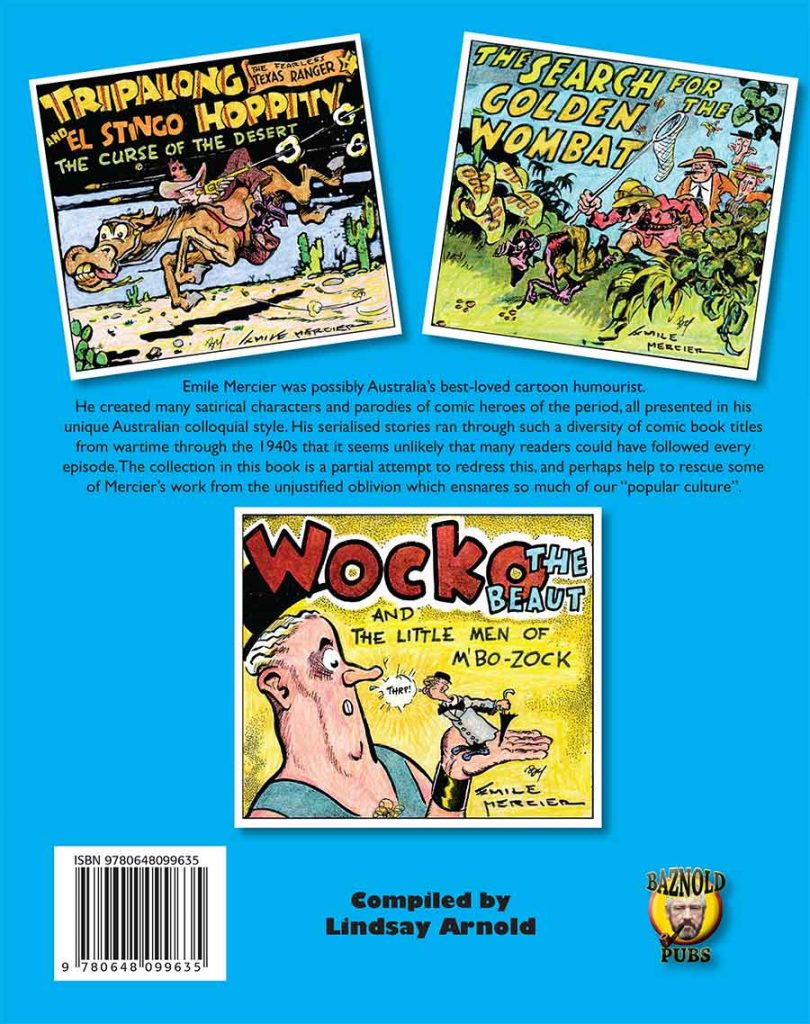
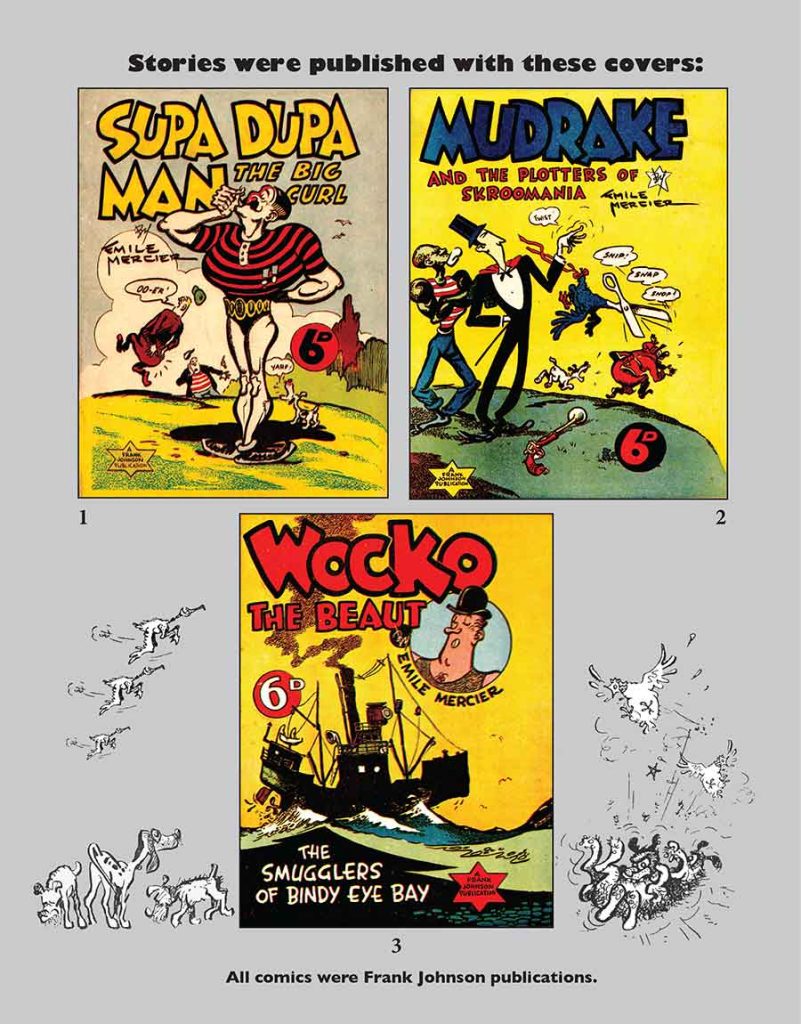
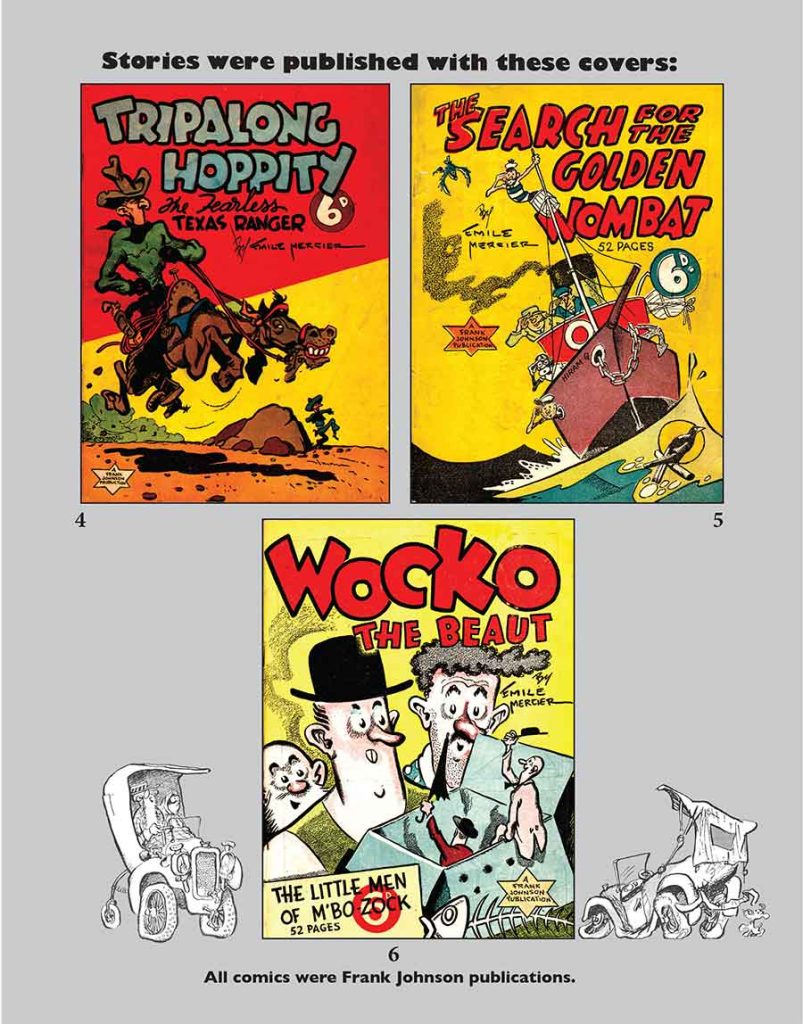

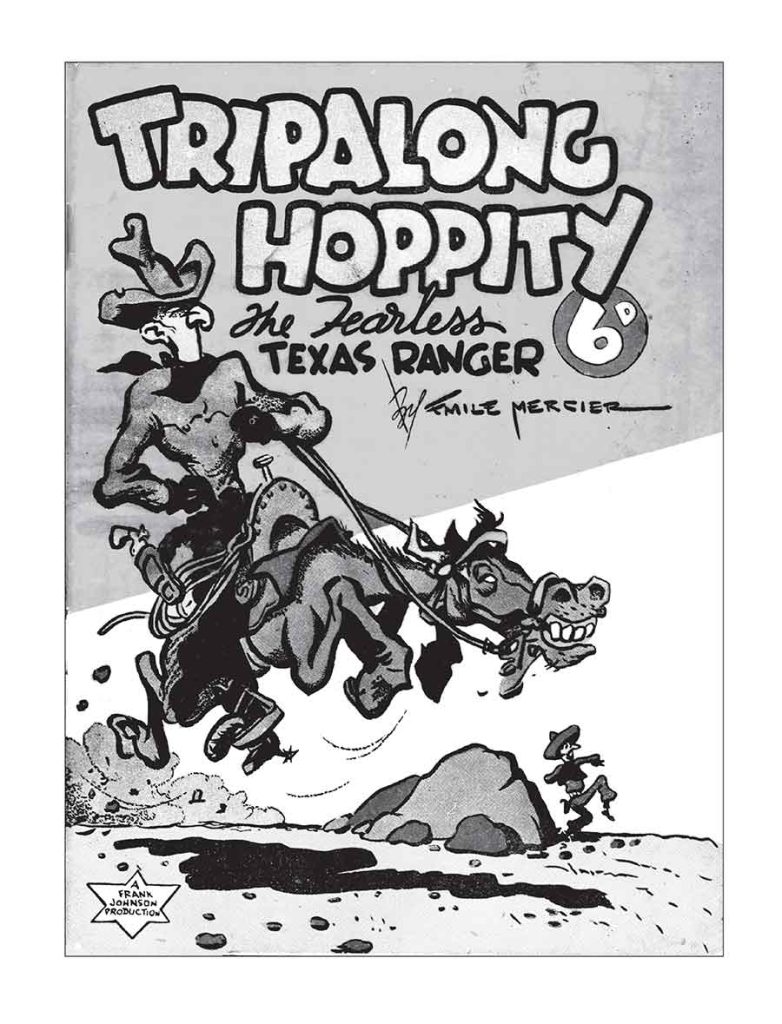
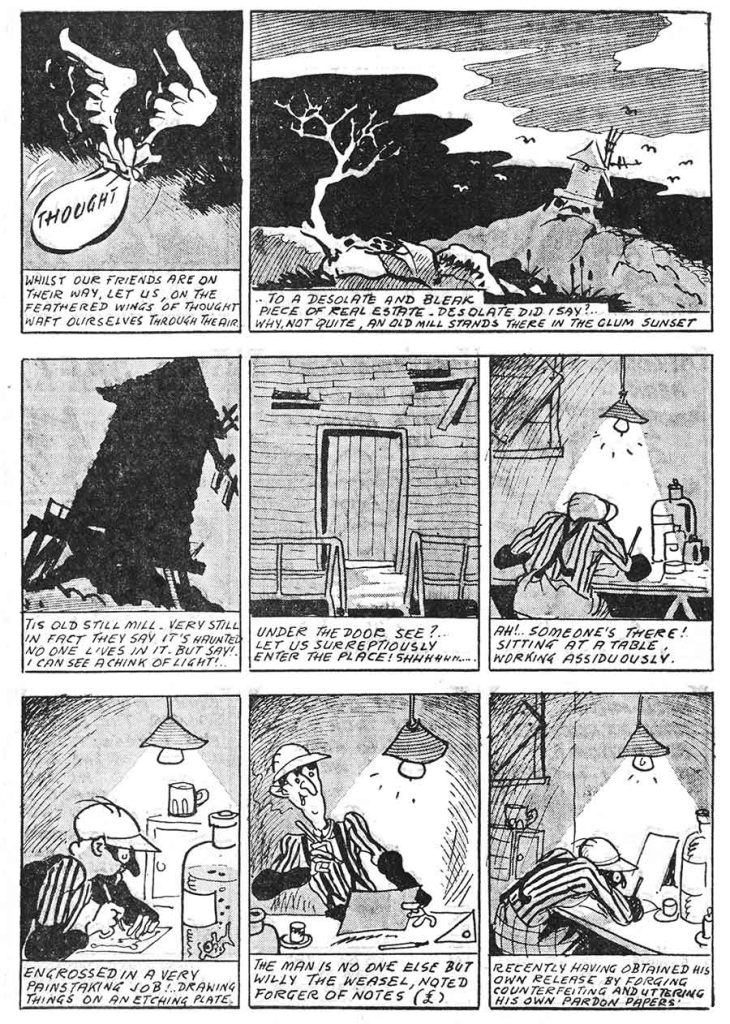
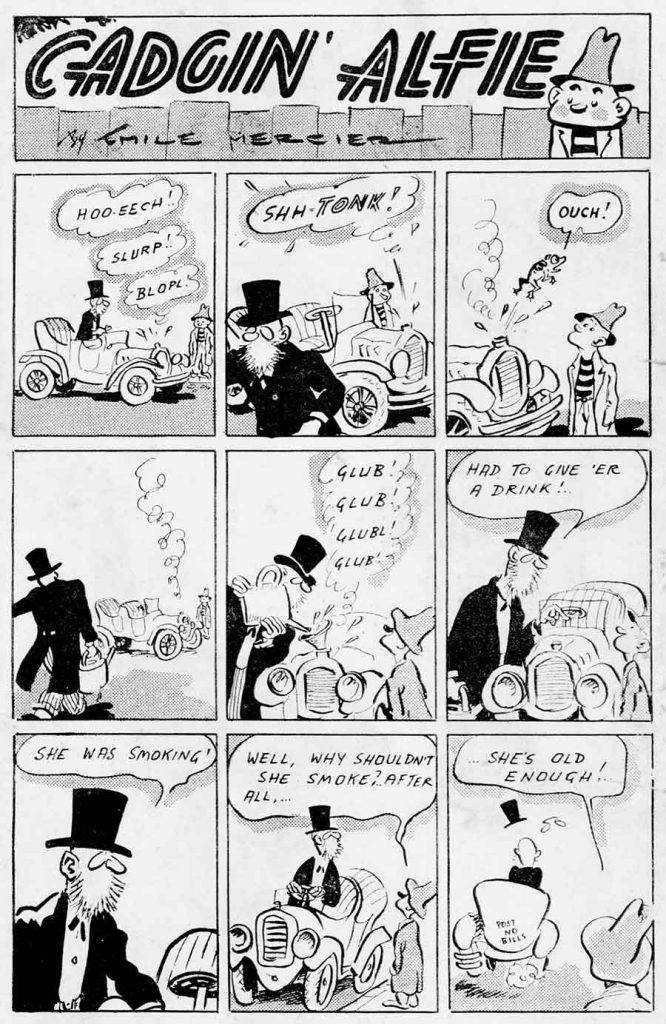
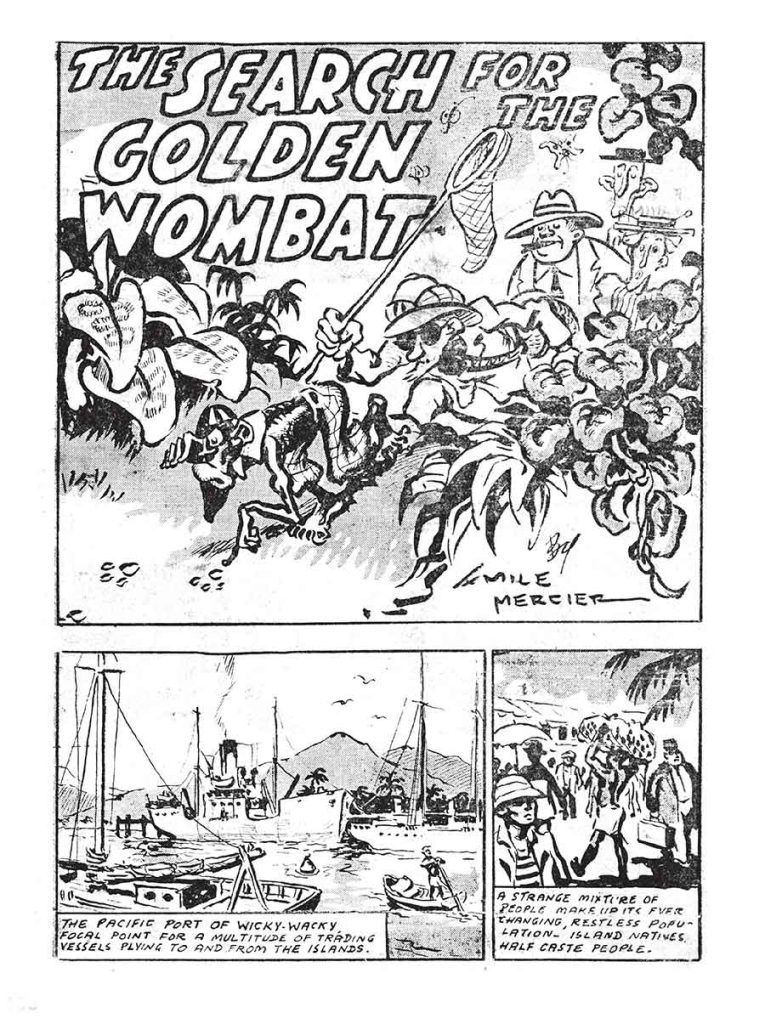

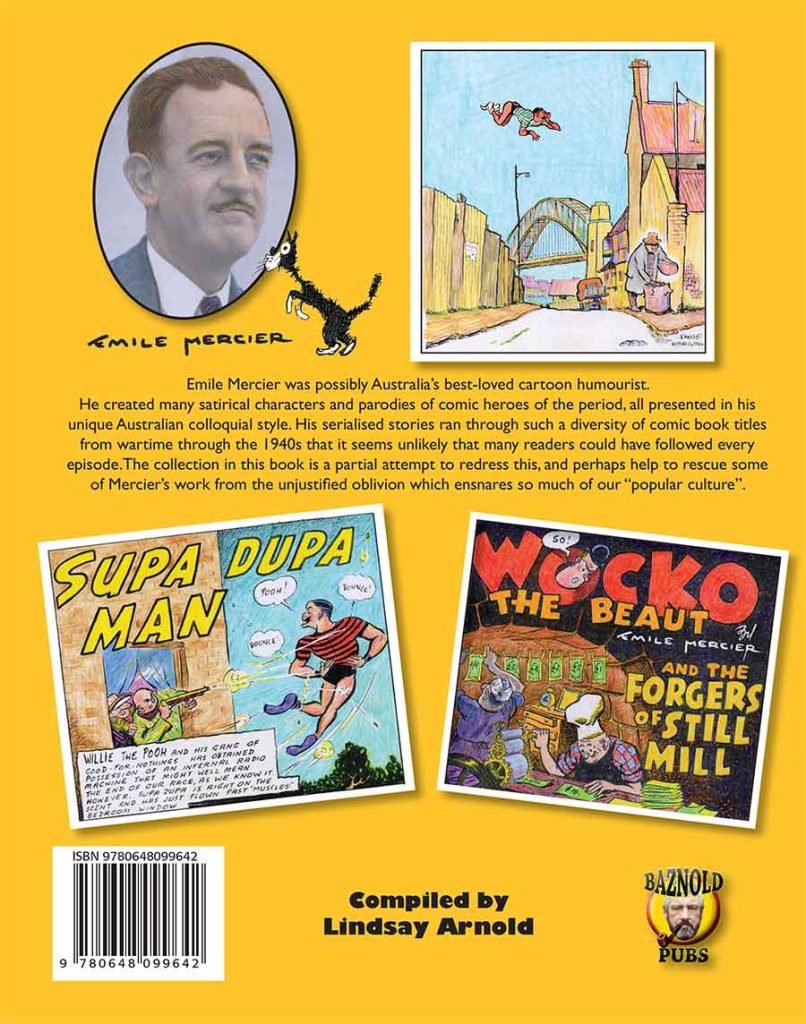
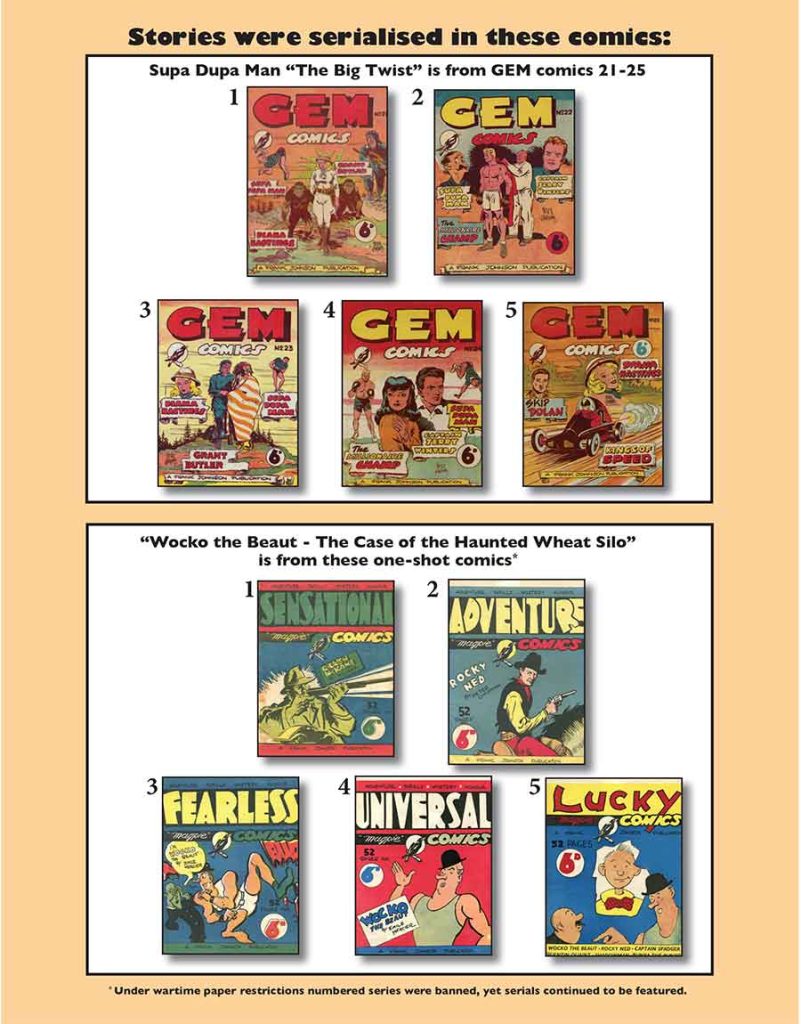
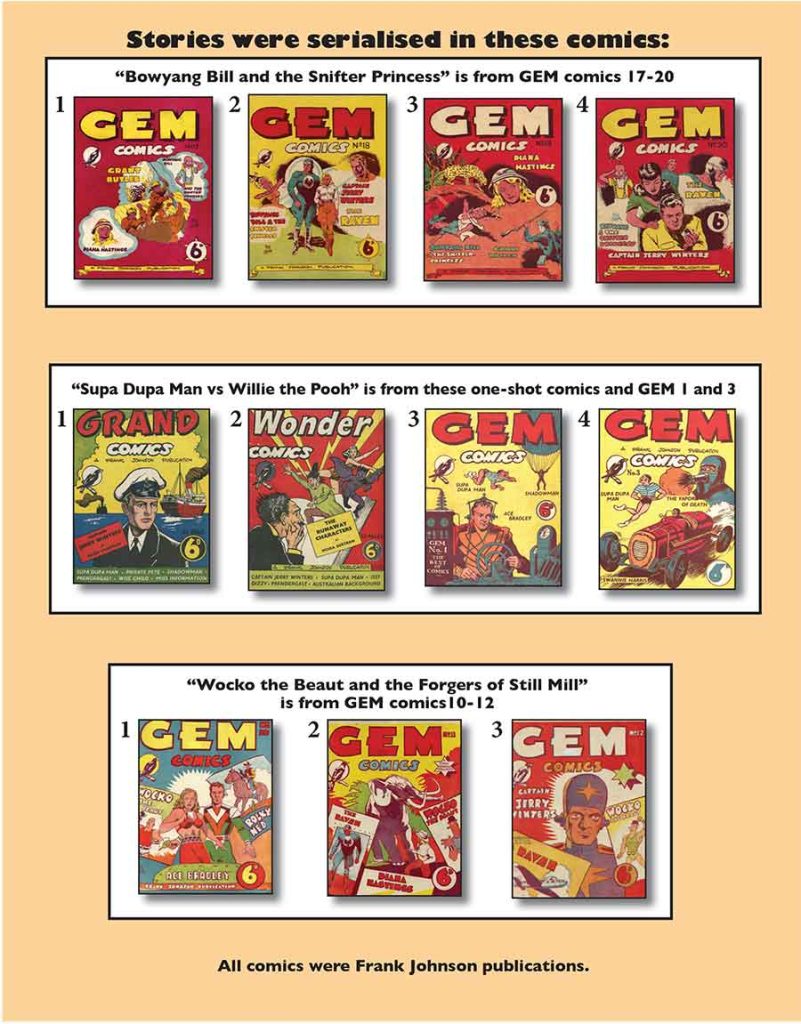
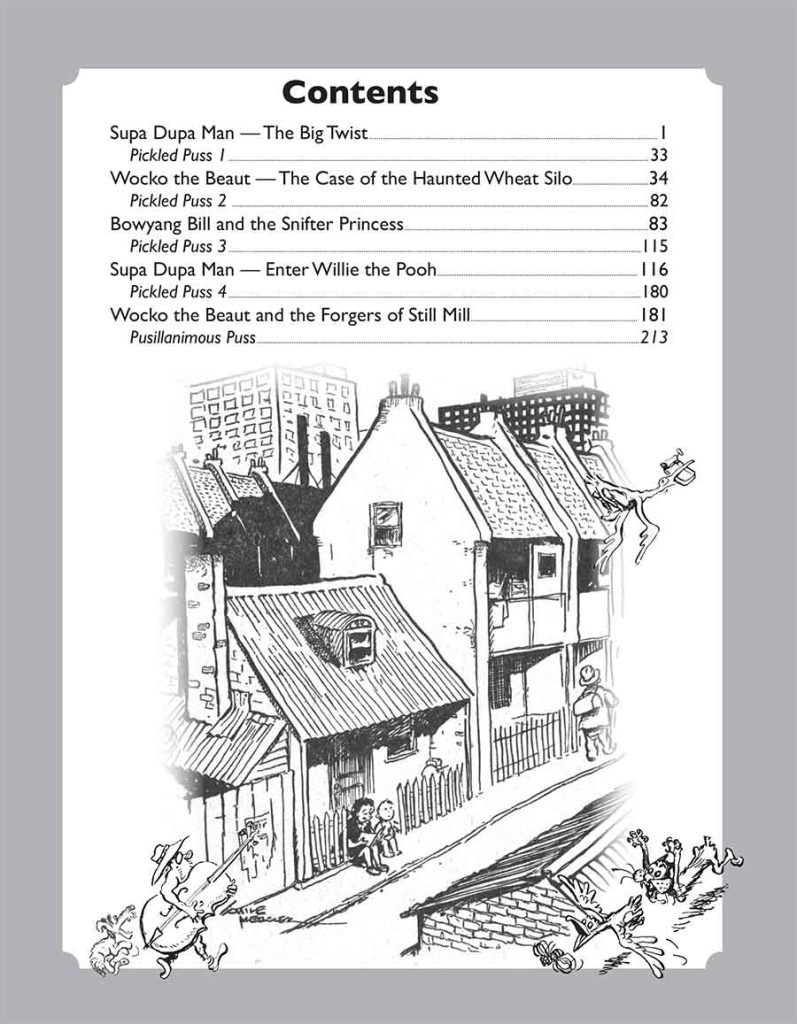
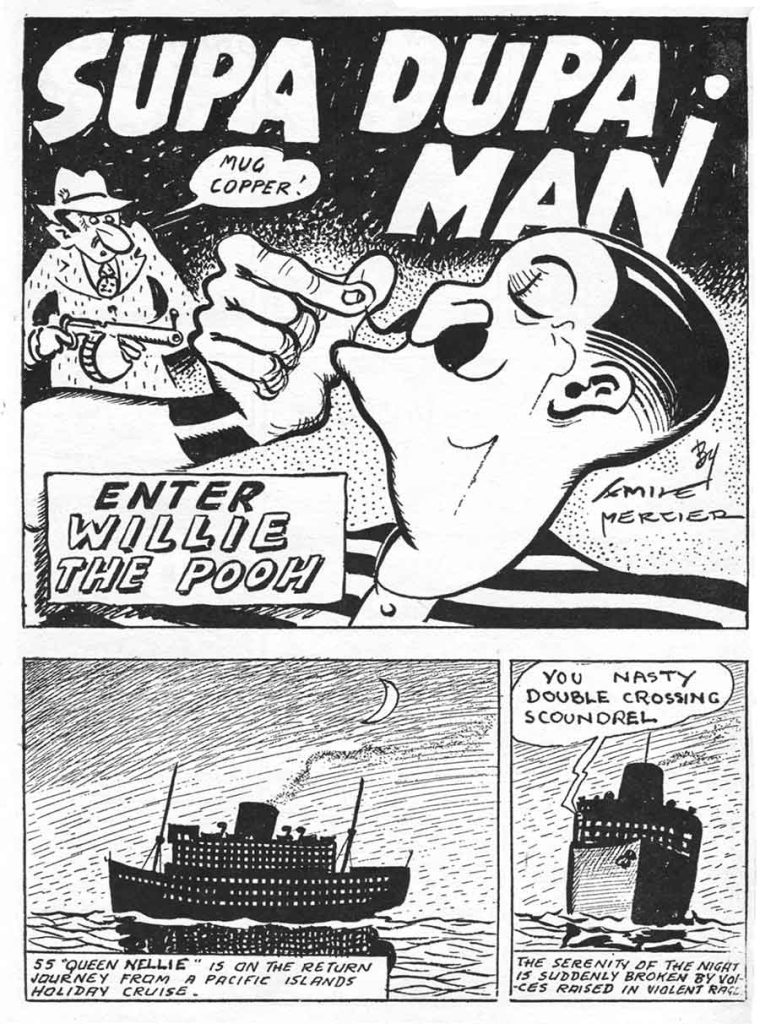
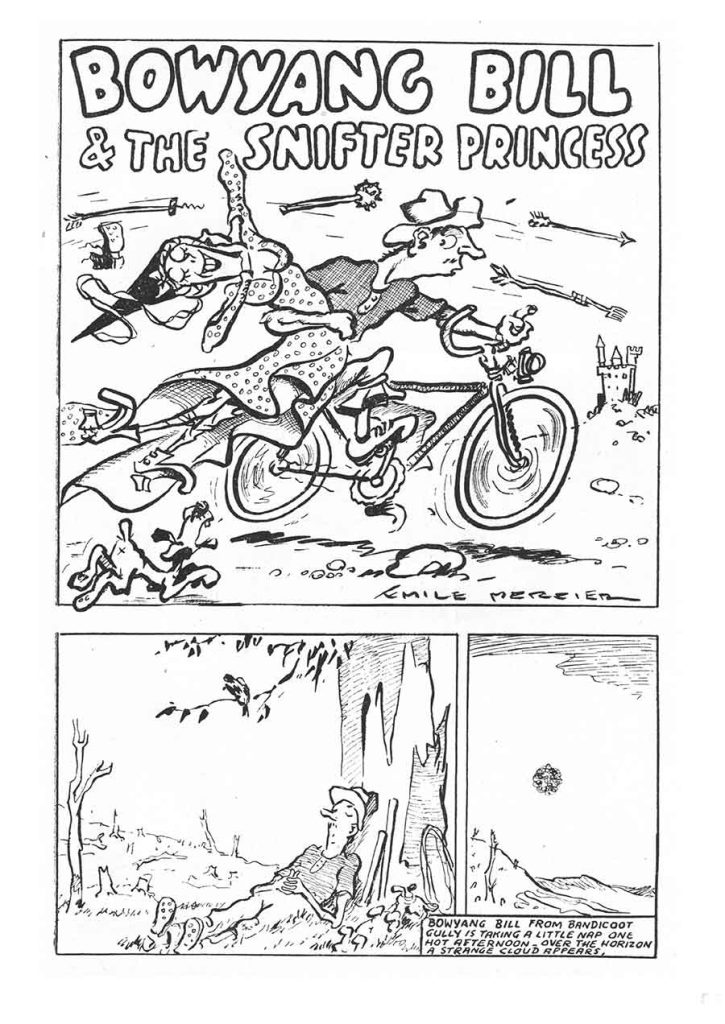
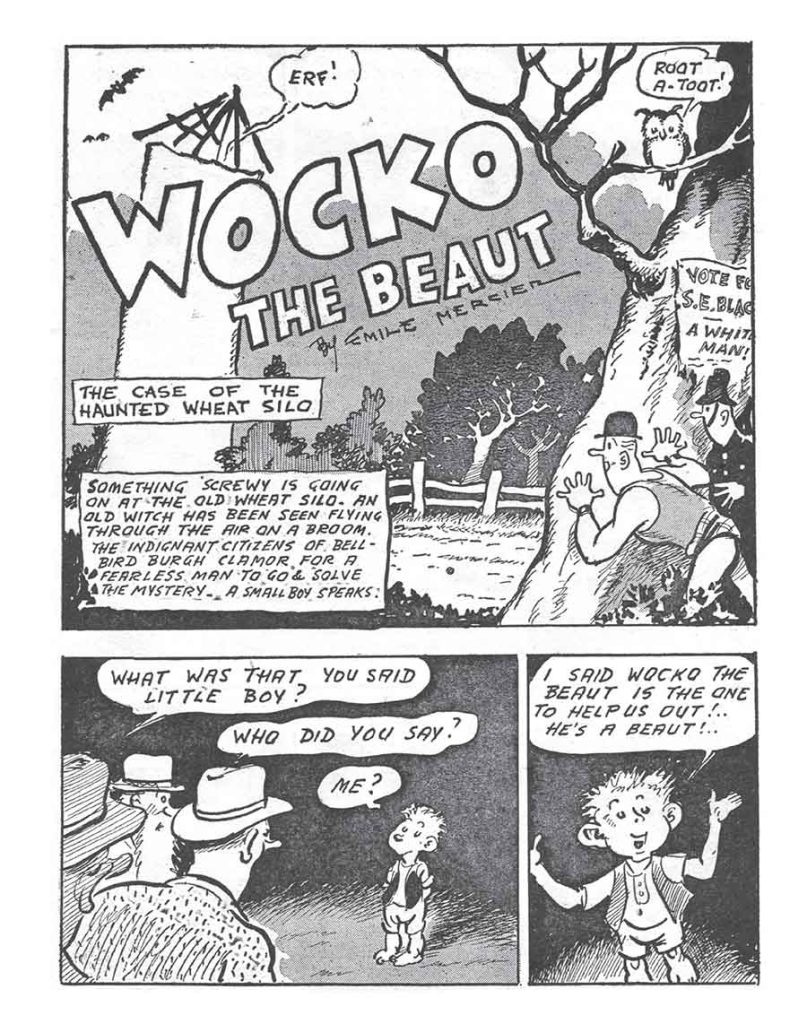

Five complete big serials from the 1940s
ISBN 9780648099642
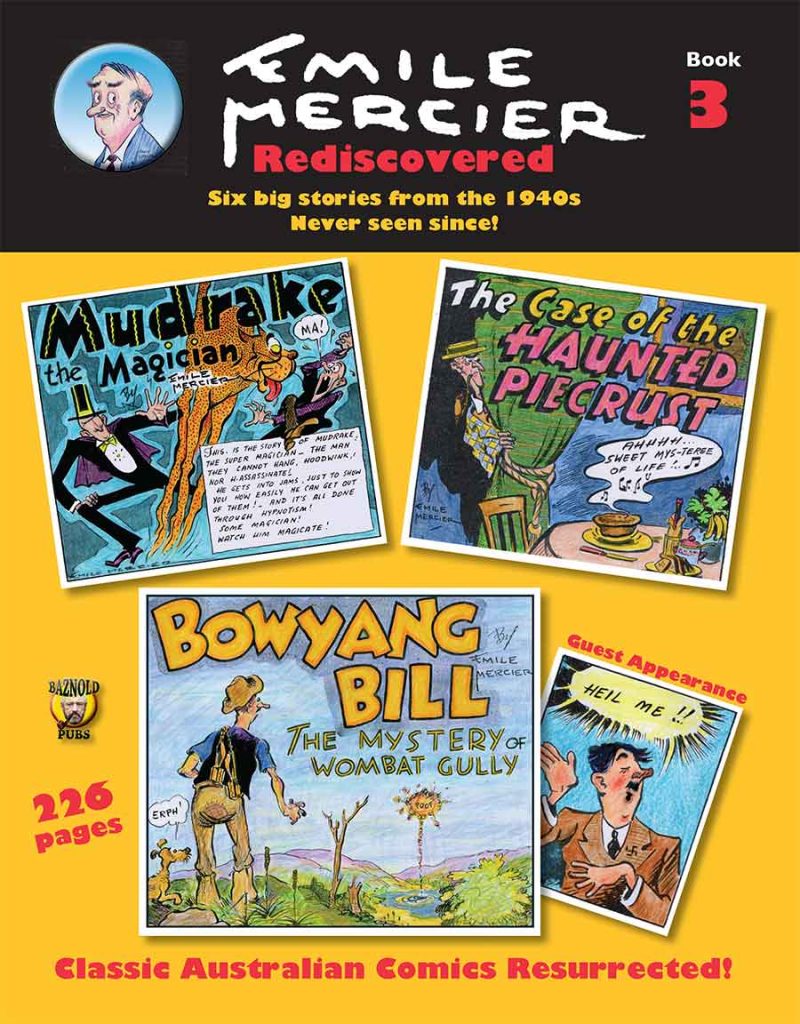

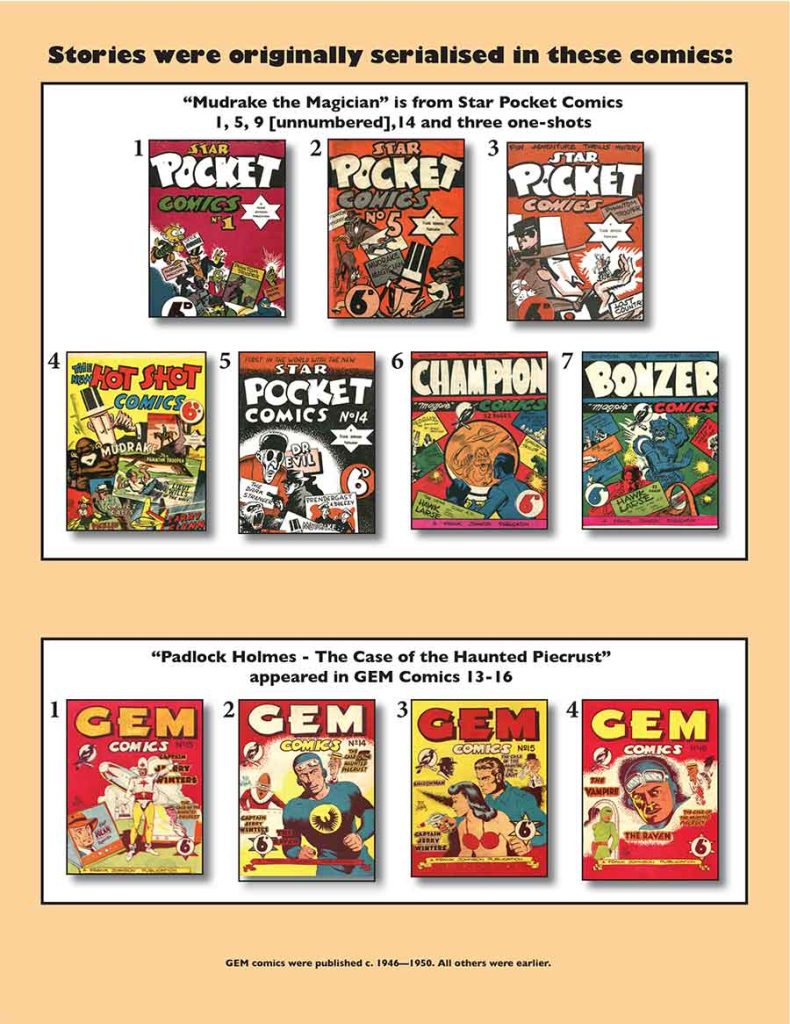
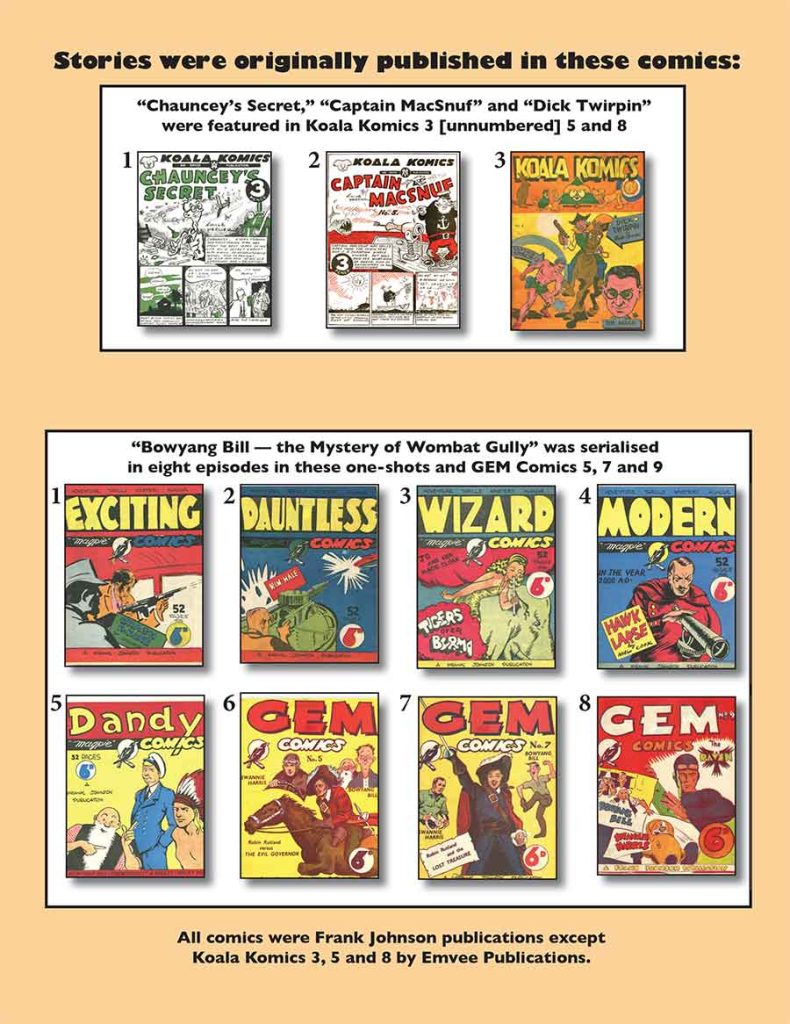
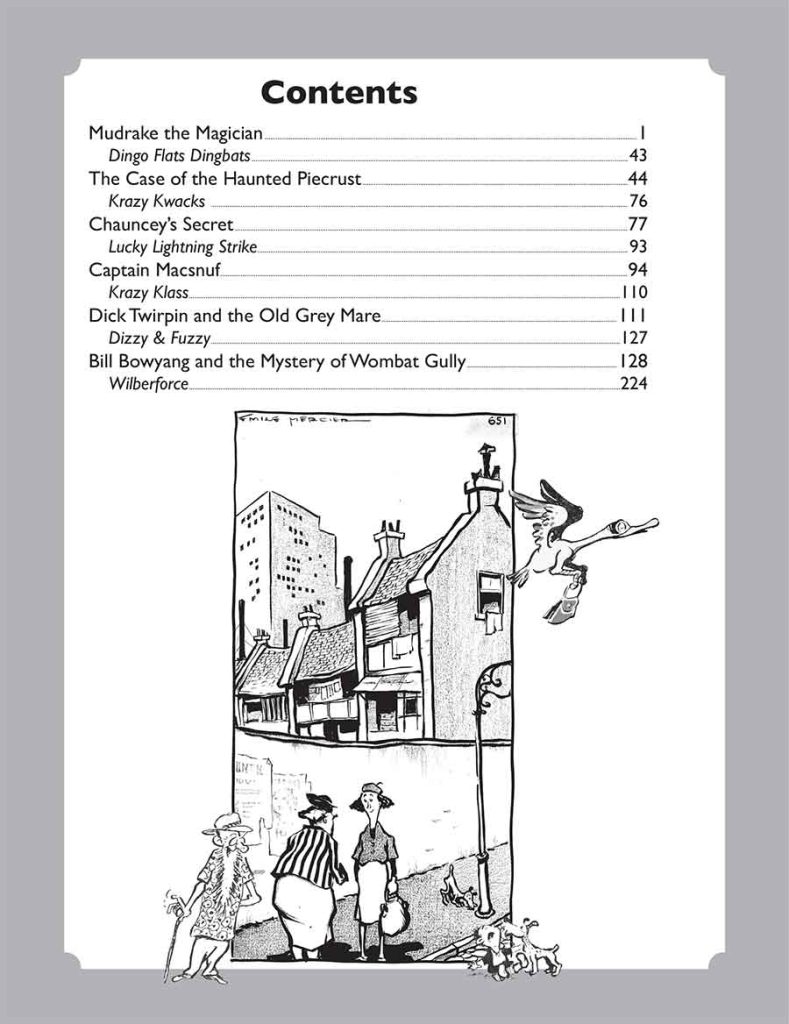
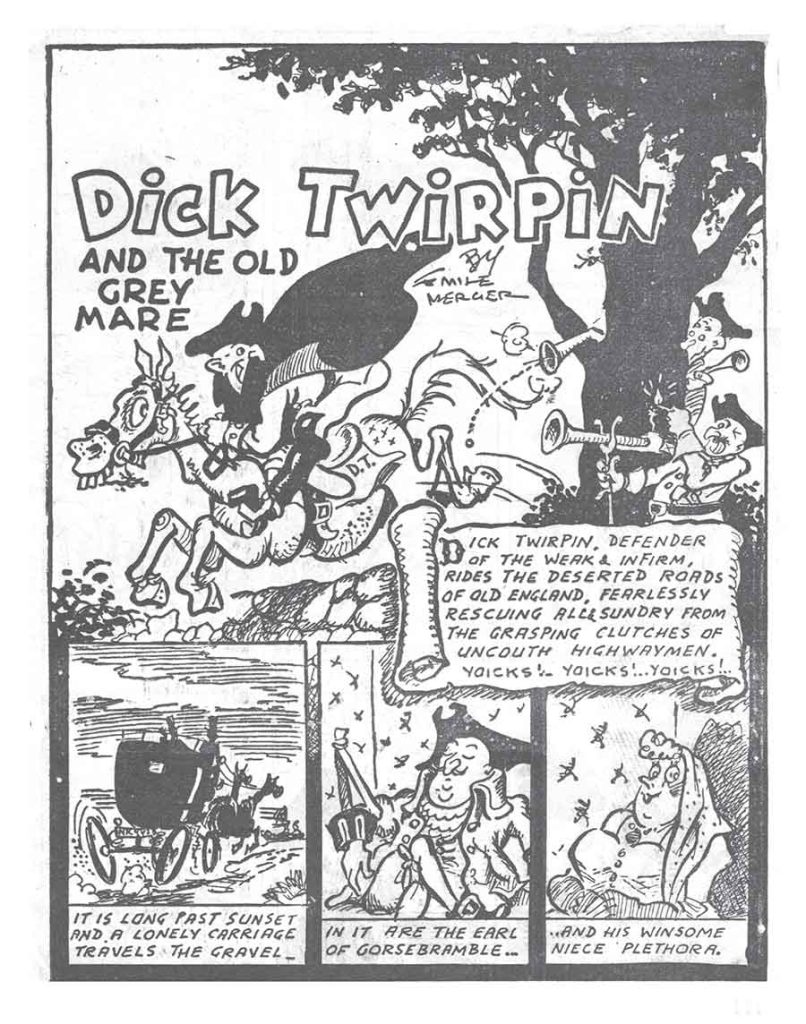

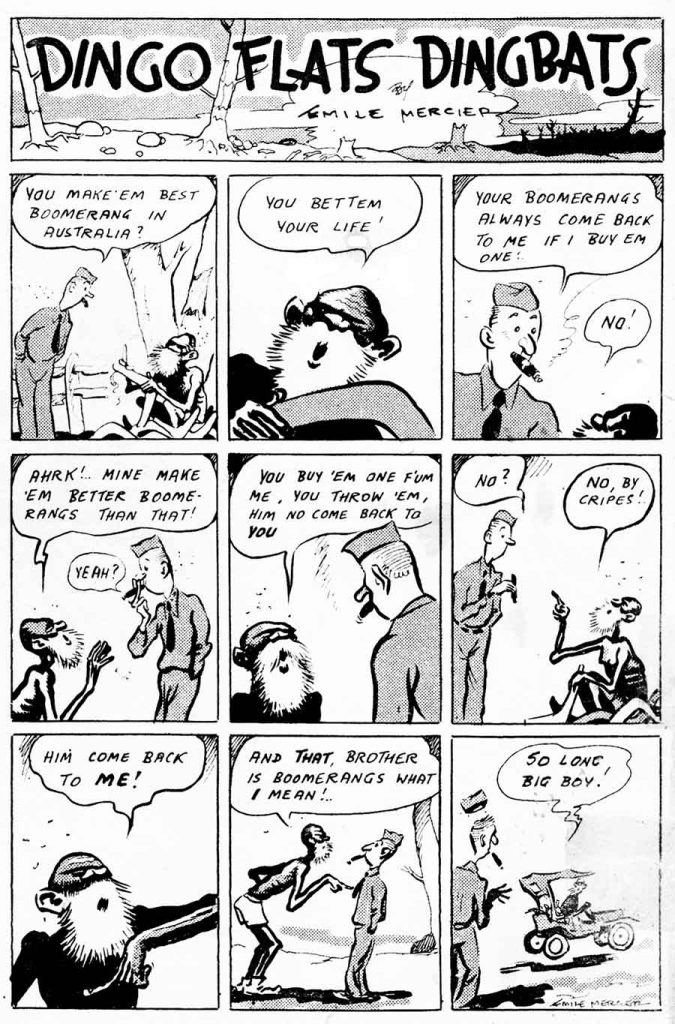
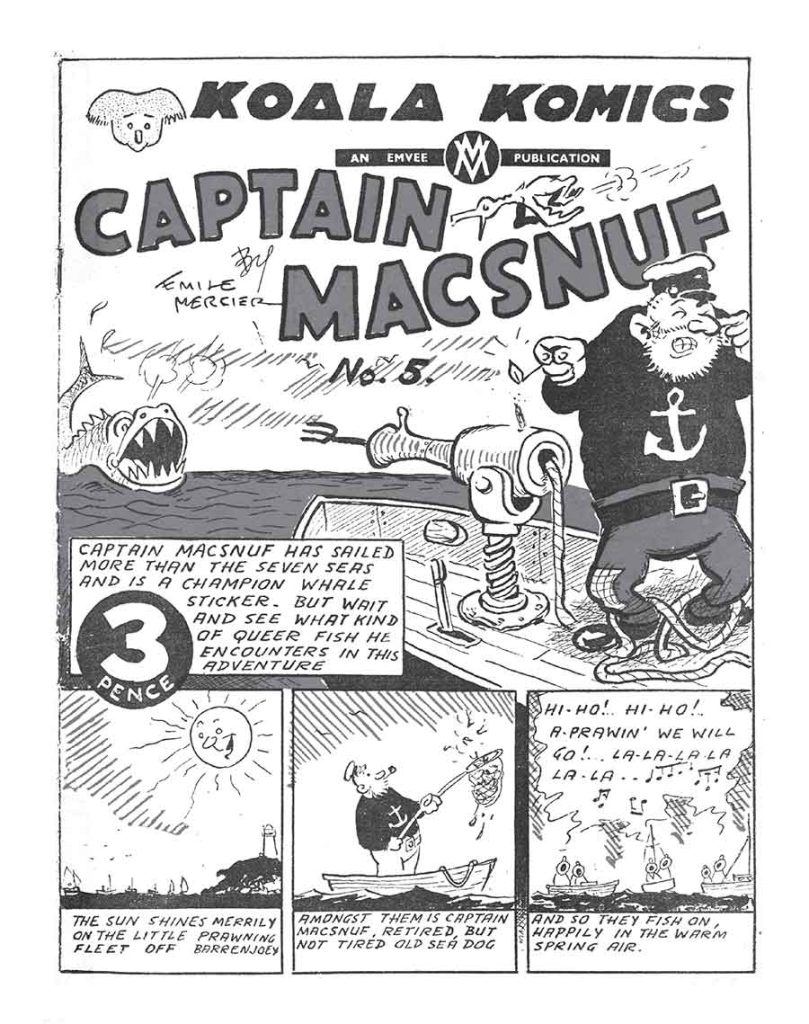
Six big stories from the 1940s
ISBN 9780648099659